School District Measures February 14th 2023
As analyses are completed, summary results will be provided on this page.
Contents
- Summary
- Bond summary
- Levy summary
- Taxpayer cost impact estimate calculators for the levies
- Taxpayer cost impact estimate calculators for the bonds
- Enrichment levy amounts charts
- Capital levy amounts charts
- Bond amounts chart
- Bond schedules
- County voters’ pamphlet rules summary
- Pro/Con committees for the voters’ pamphlet summary
- Analyses of the bond cost analyses presented by districts
- Analyses of the enrichment levy cost analyses presented by districts
- Calculator methodology
Summary
For the February 14th, 2023 election, across the state:
- There are 8 bond measures.
- There are 37 enrichment levies.
- There are 12 capital levies.
Bond summary

Levy summary
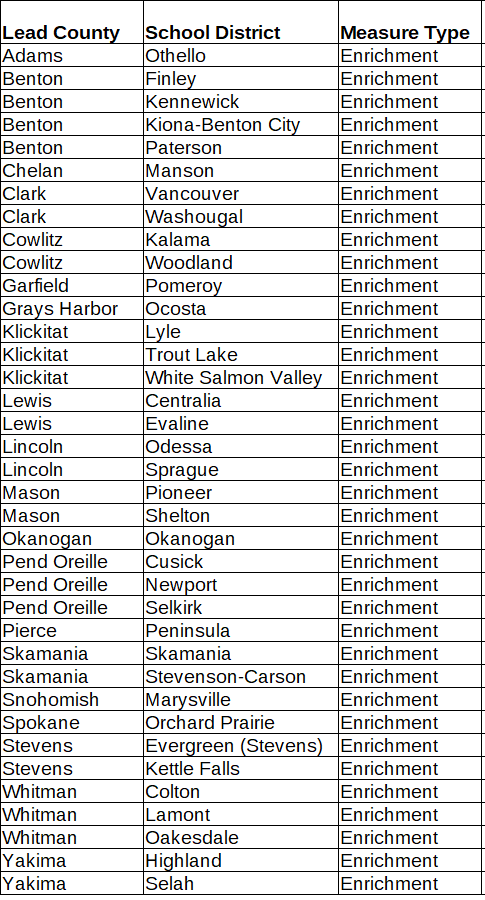
Taxpayer cost impact estimate calculators for the levies
Calculator for the Centralia SD’s Enrichment Measure
Calculator for the Cusick SD’s Enrichment Measure
Calculator for the Evaline SD’s Enrichment Measure
Calculator for the Finley SD’s Enrichment Measure
Calculator for the Highland SD’s Enrichment Measure
Calculator for the Kalama SD’s Enrichment Measure
Calculator for the Kennewick SD’s Enrichment Measure
Calculator for the Kiona-Benton City SD’s Enrichment Measure
Calculator for the Lyle SD’s Enrichment Measure
Calculator for the Manson SD’s Enrichment Measure
Calculator for the Marysville SD’s Enrichment Measure
Calculator for the Okanogan SD’s Enrichment Measure
Calculator for the Othello SD’s Enrichment Measure
Calculator for the Paterson SD’s Enrichment Measure
Calculator for the Peninsula SD’s Enrichment Measure
Calculator for the Pioneer SD’s Enrichment Measure
Calculator for the Pomeroy SD’s Enrichment Measure
Calculator for the Selkirk SD’s Enrichment Measure
Calculator for the Shelton SD’s Enrichment Measure
Calculator for the Skamania SD’s Enrichment Measure
Calculator for the Stevenon-Carson SD’s Enrichment Measure
Calculator for the Trout Lake SD’s Enrichment Measure
Calculator for the Vancouver SD’s Enrichment Levy Measure
Calculator for the Washougal SD’s Capital Levy Measure
Calculator for the Washougal SD’s Enrichment Levy Measure
Calculator for the White Salmon Valley SD’s Enrichment Levy Measure
Calculator for the Woodland SD’s Enrichment Levy Measure
Taxpayer cost impact estimate calculators for the bonds
Calculator for the Elma SD’s Bond Measure
Calculator for the Enumclaw SD’s Bond Measure
Calculator for the Mabton SD’s Bond Measure
Calculator for the Napavine SD’s Bond Measure
Calculator for the Oak Harbor SD’s Bond Measure
Calculator for the Orting SD’s Bond Measure
Calculator for the Pasco SD’s Bond Measure
Calculator for the Steilacoom SD’s Bond Measure
Enrichment levy amounts charts
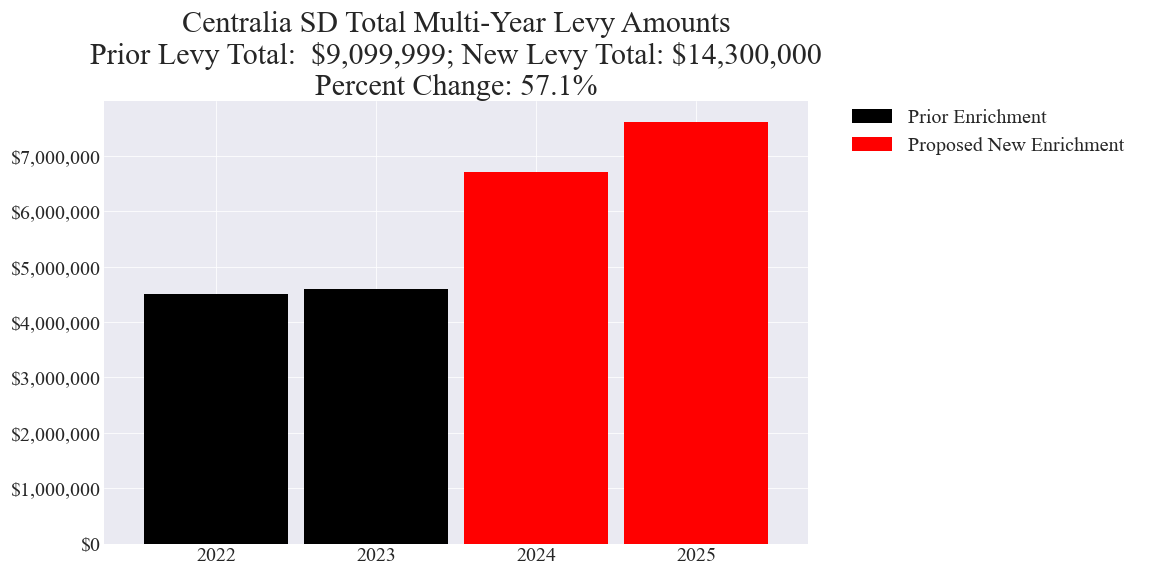
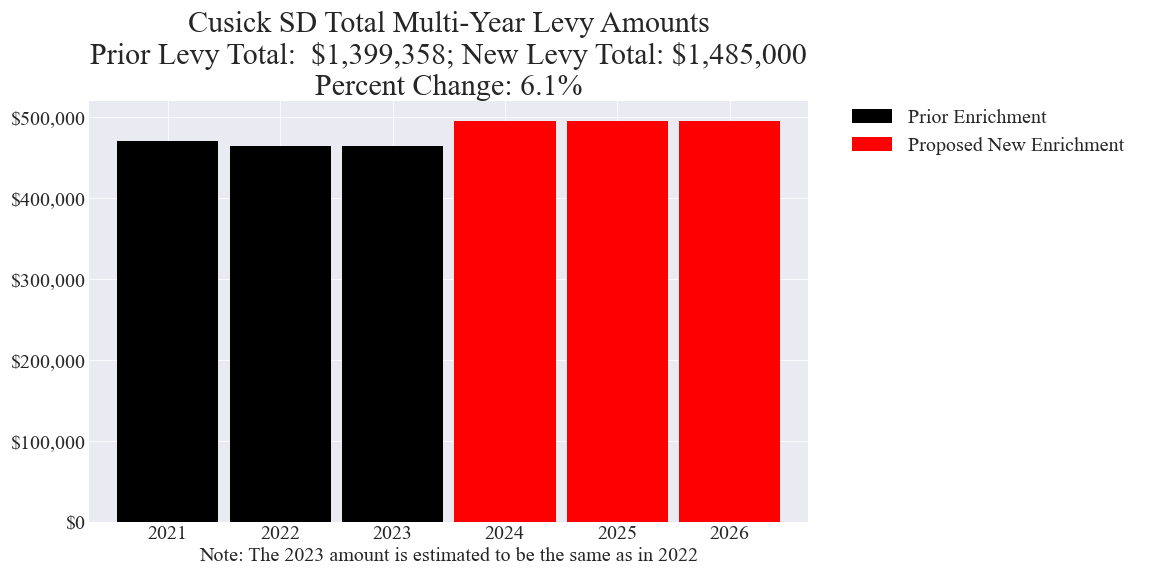
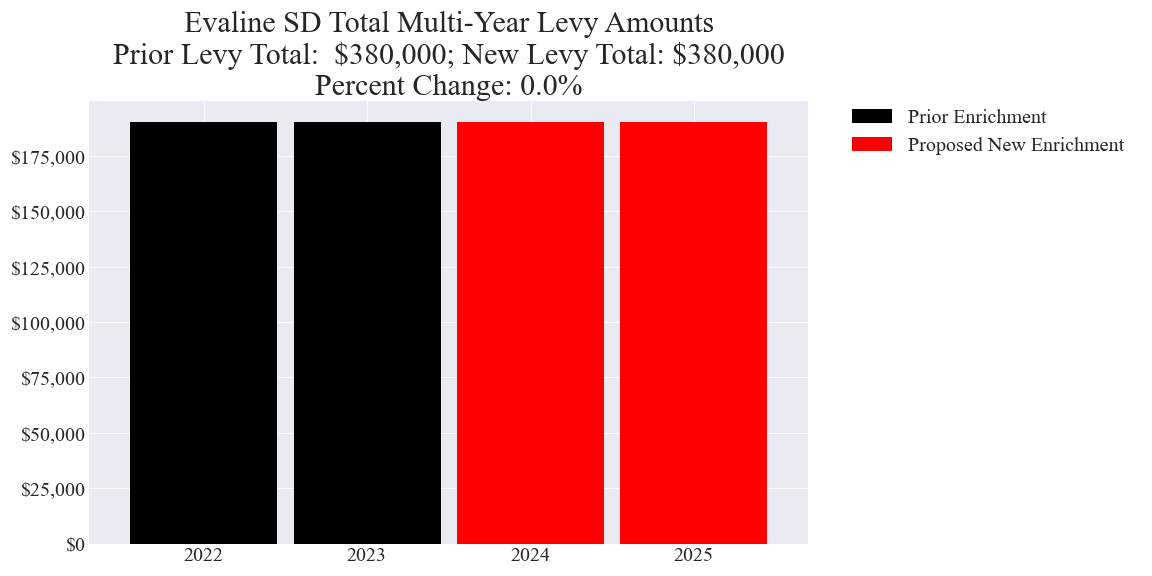
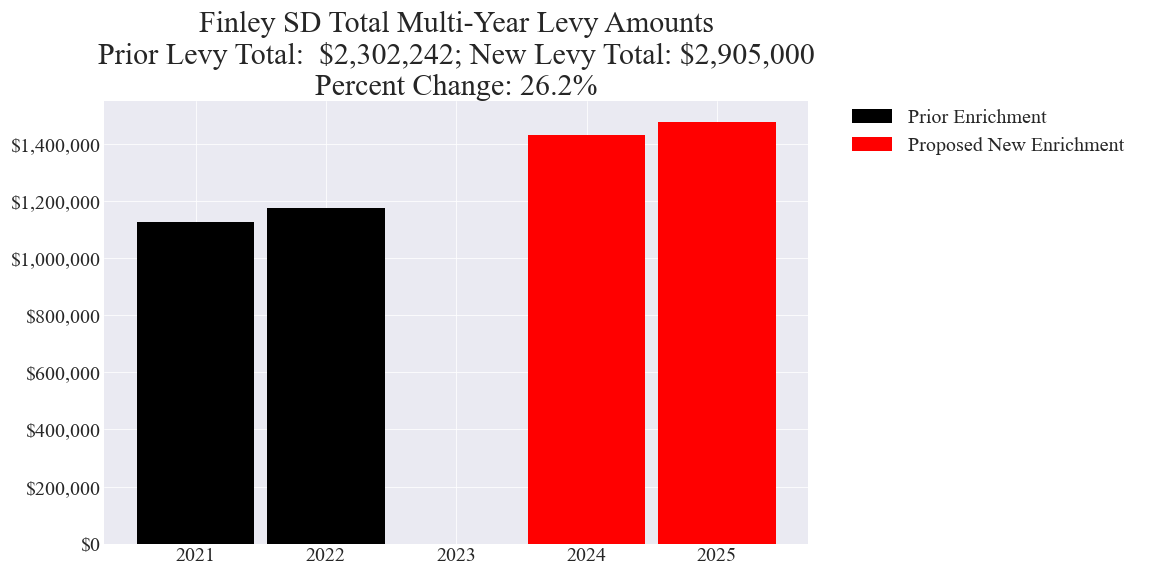
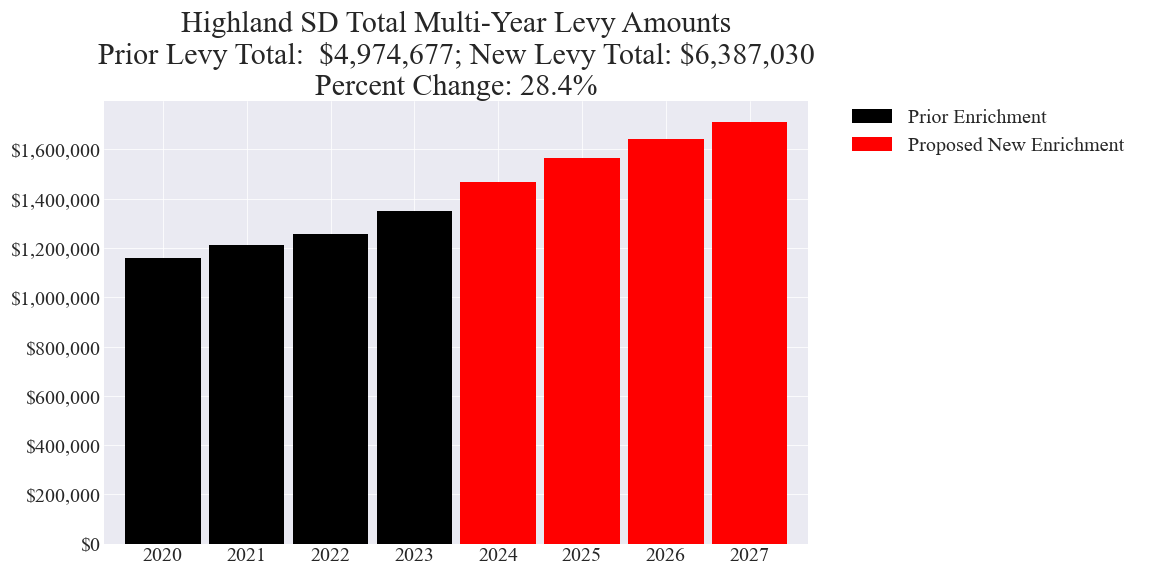
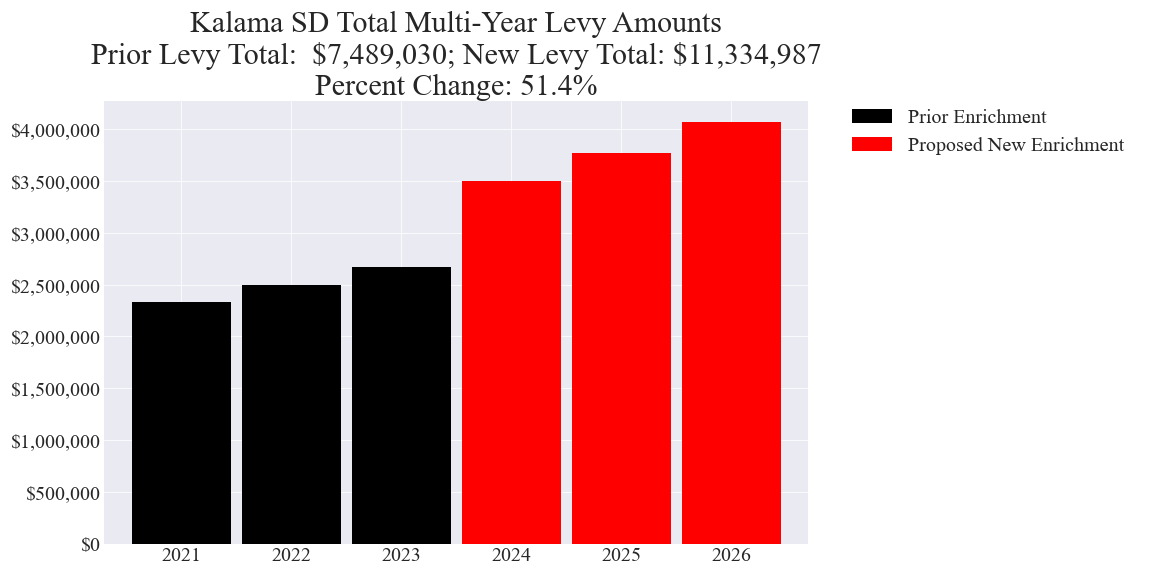

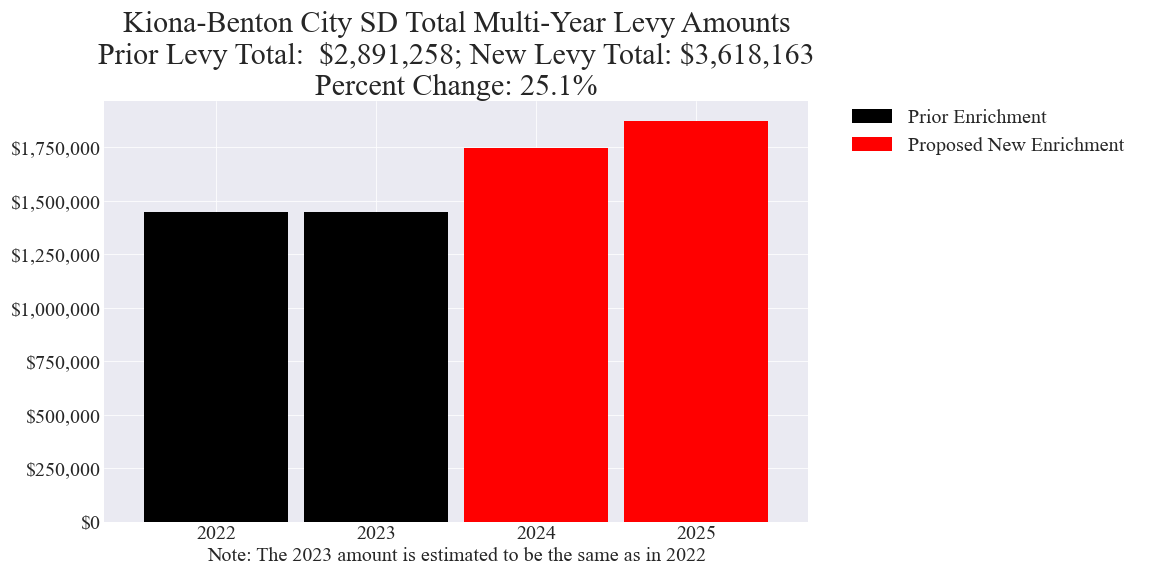
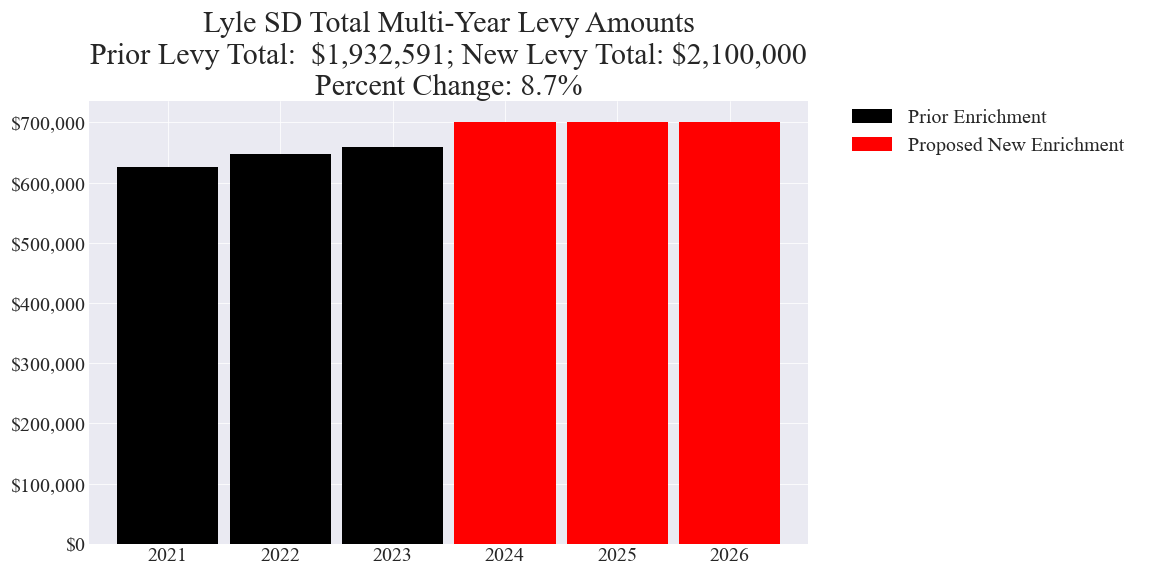
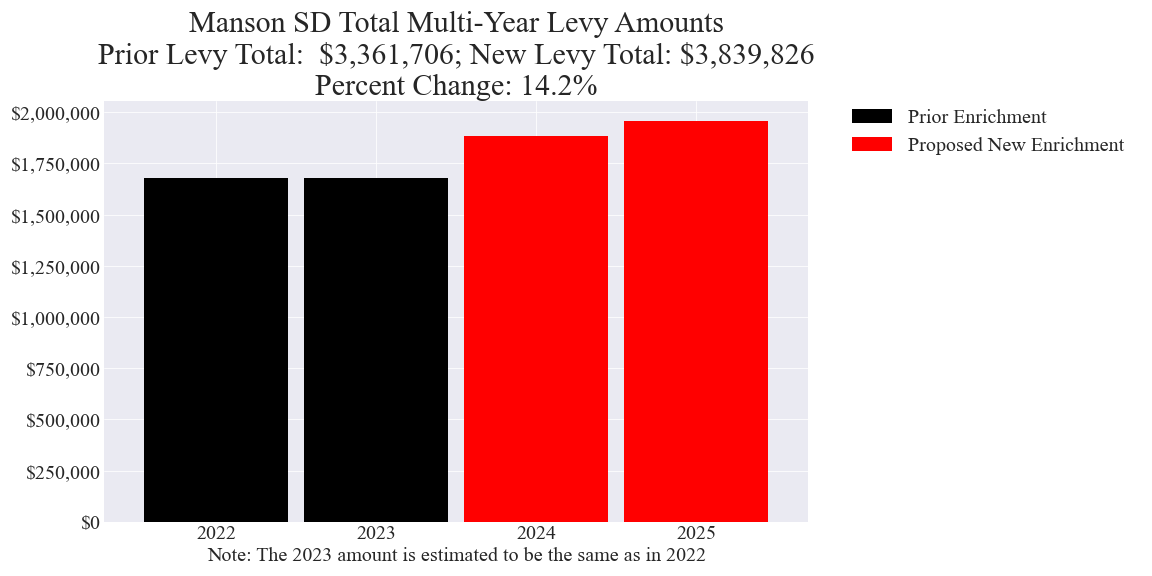
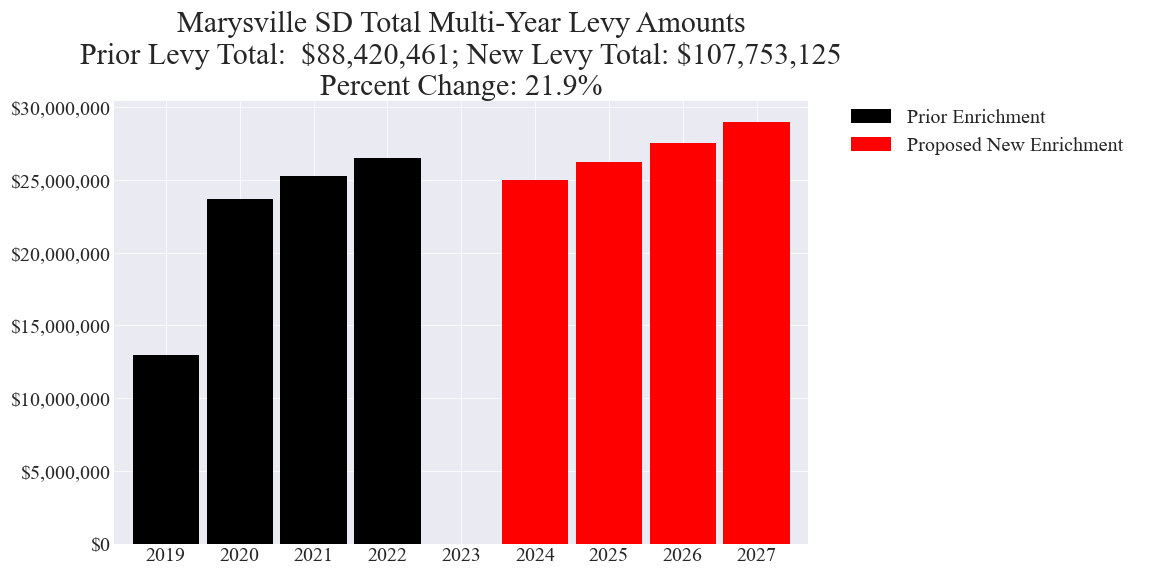
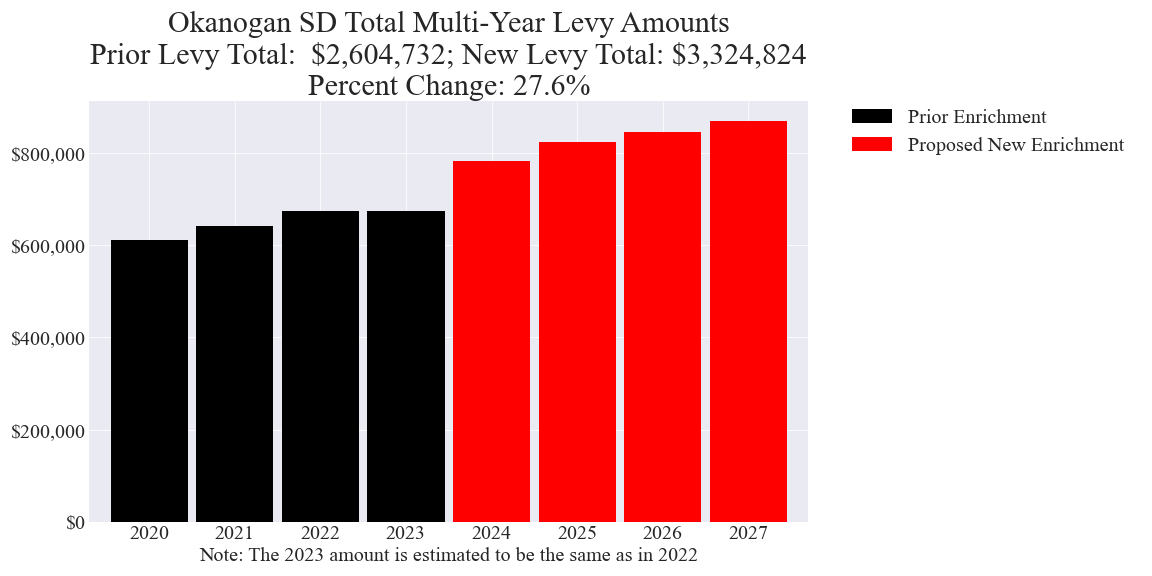

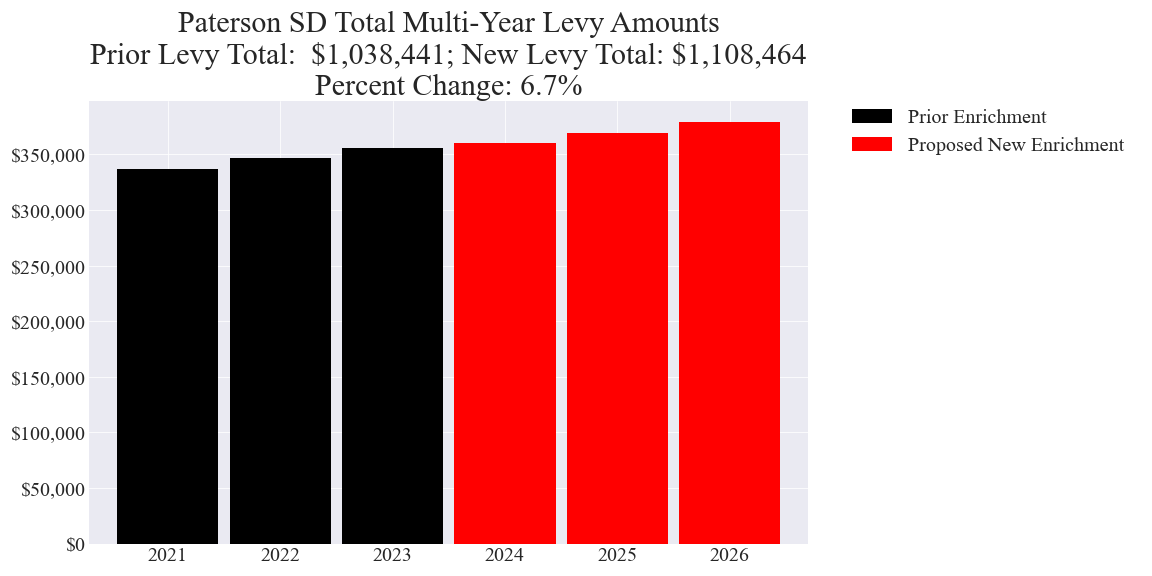
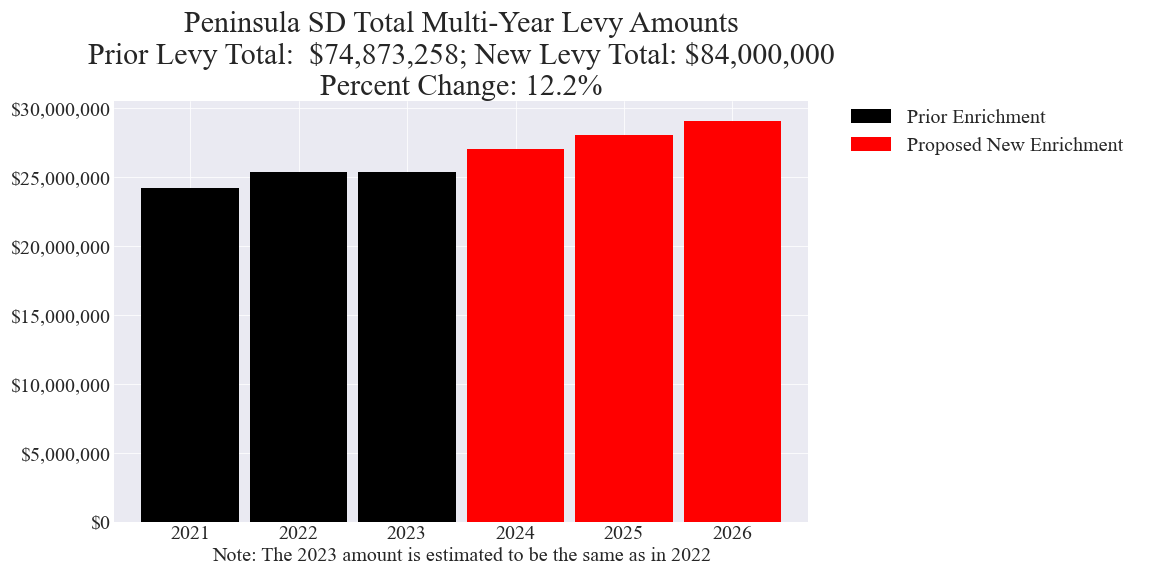
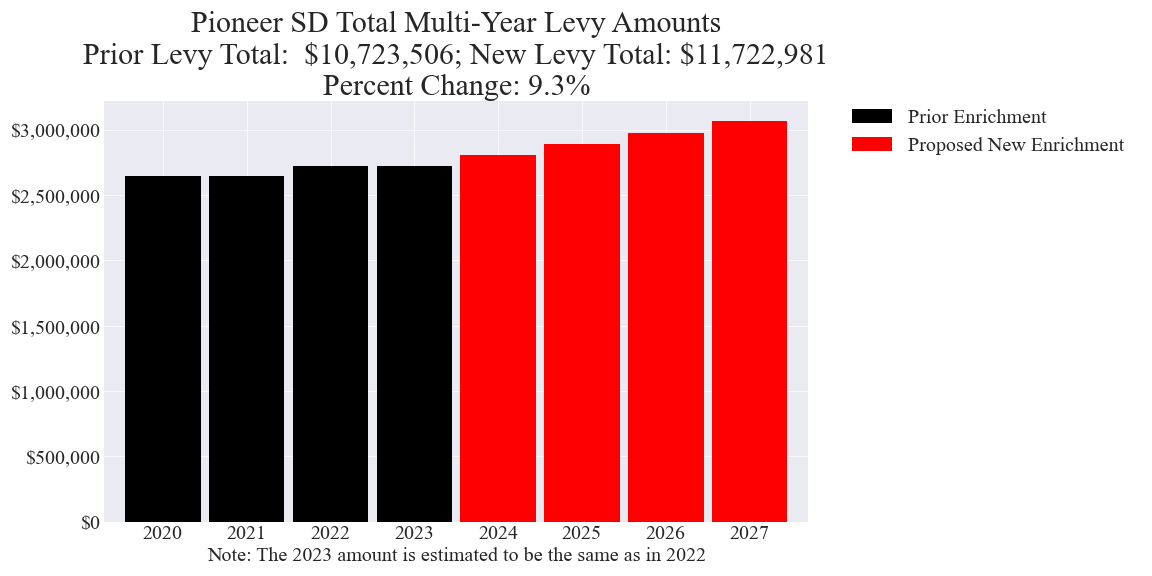
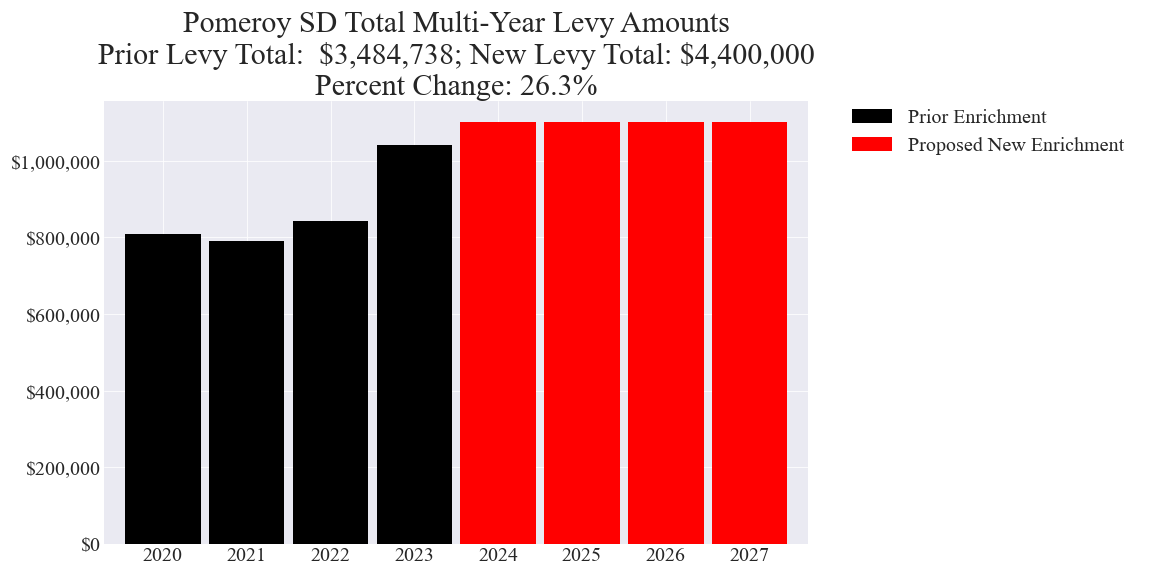
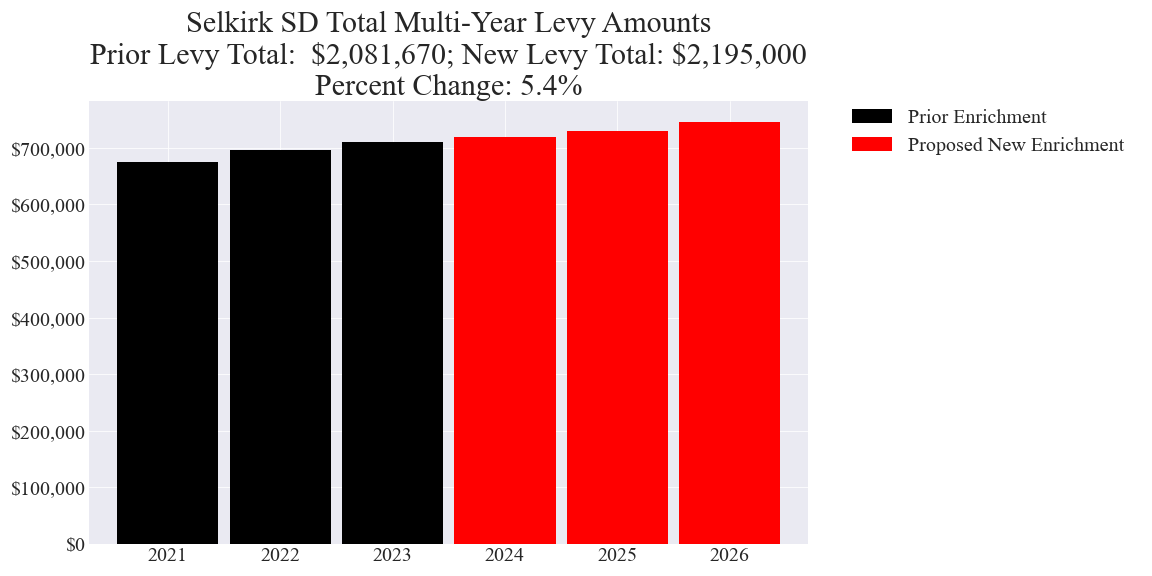
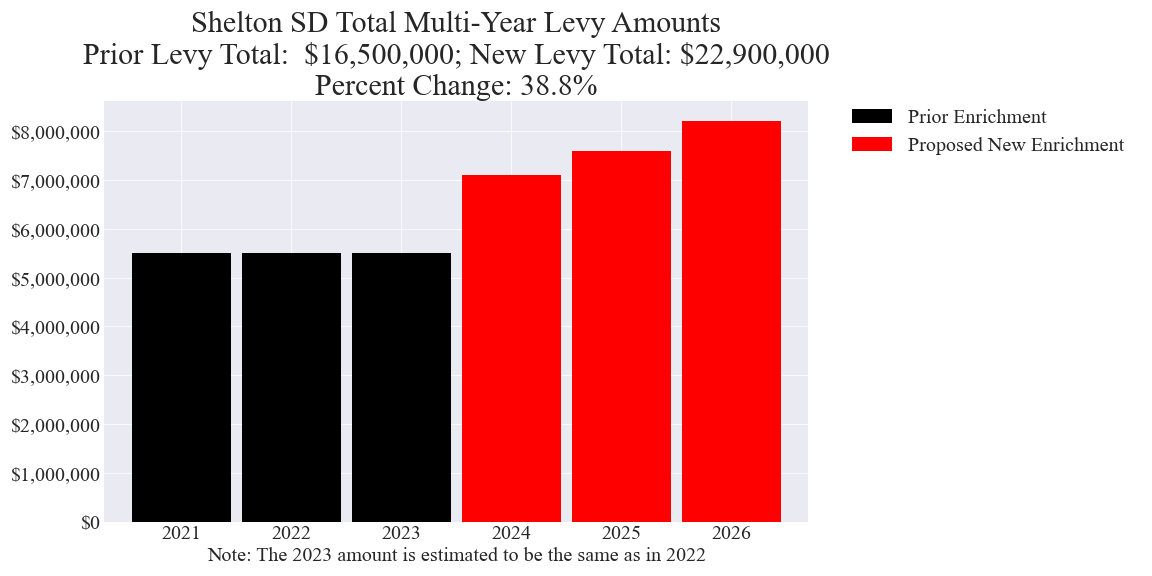
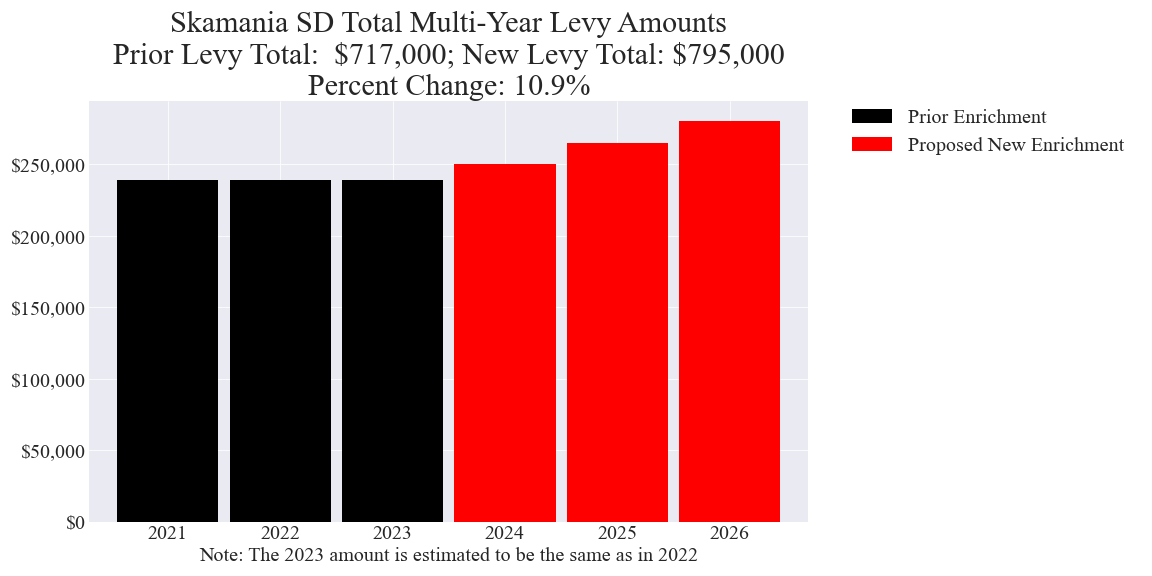
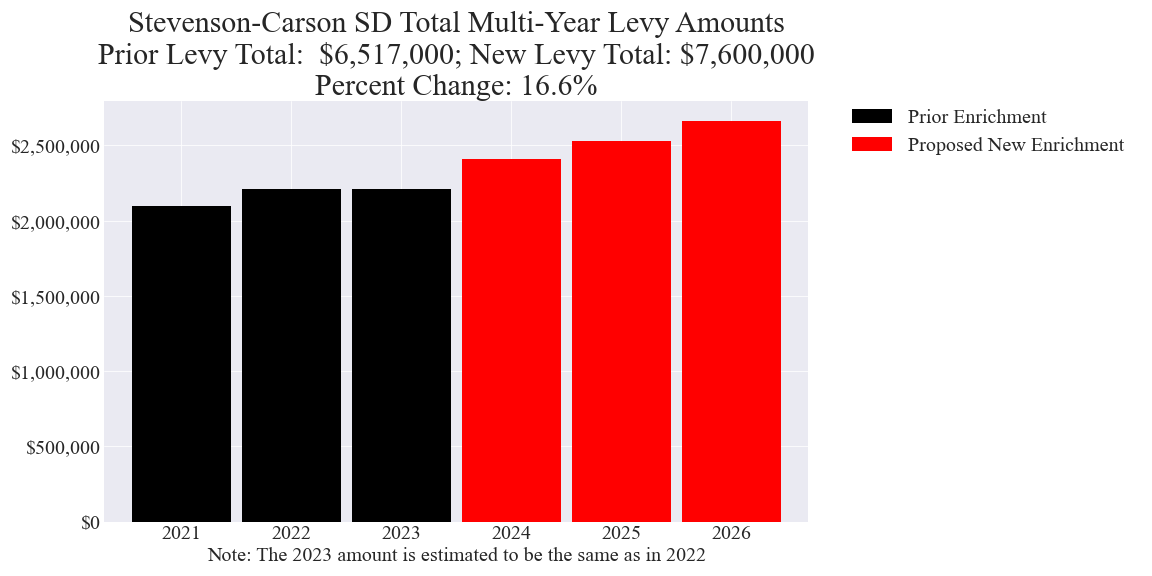
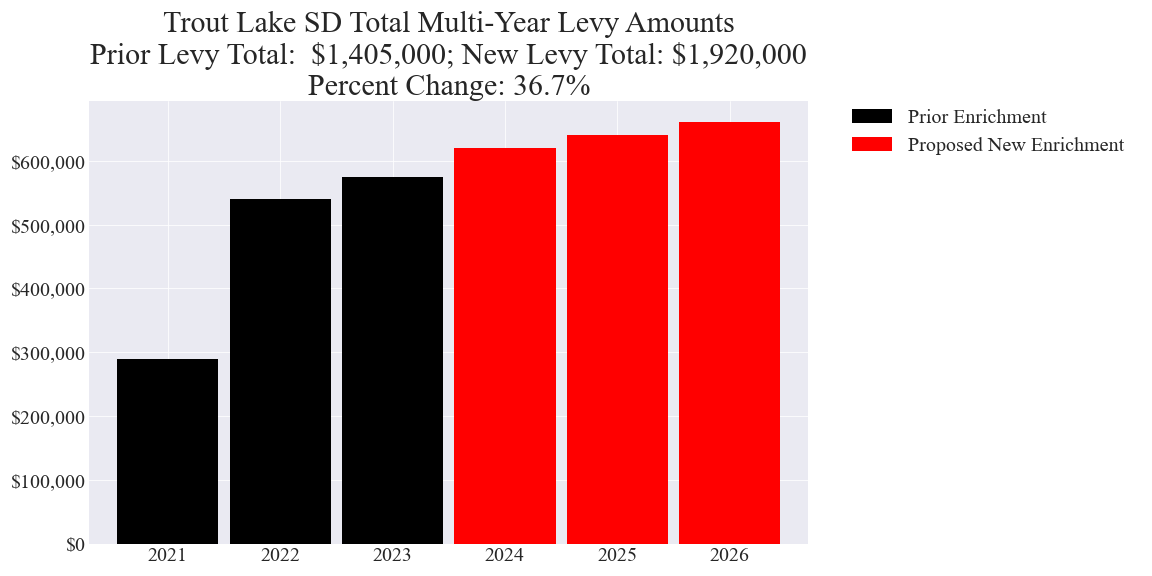
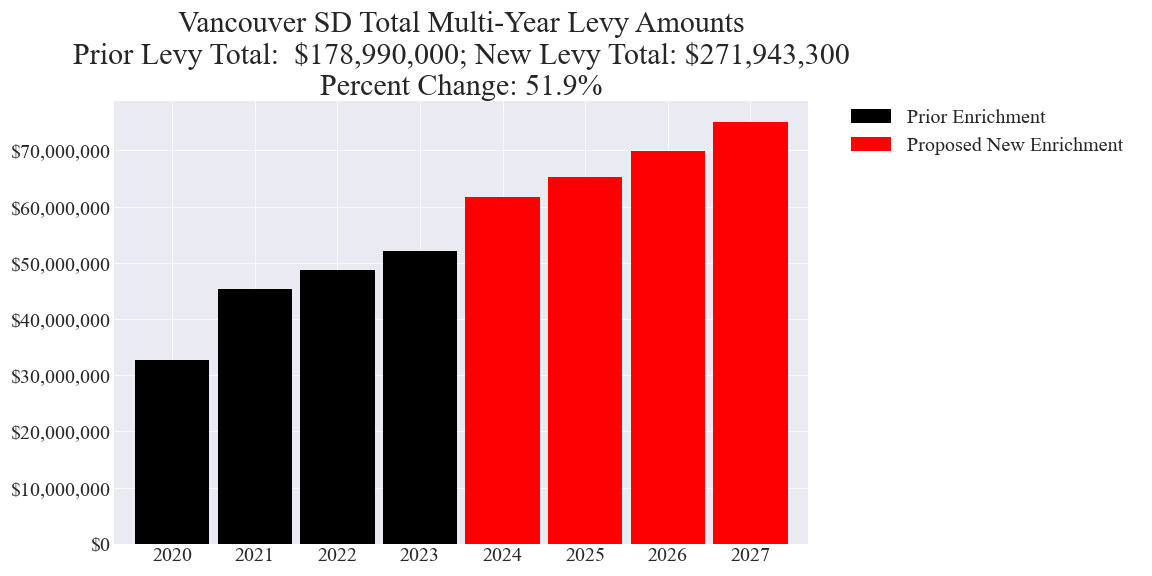
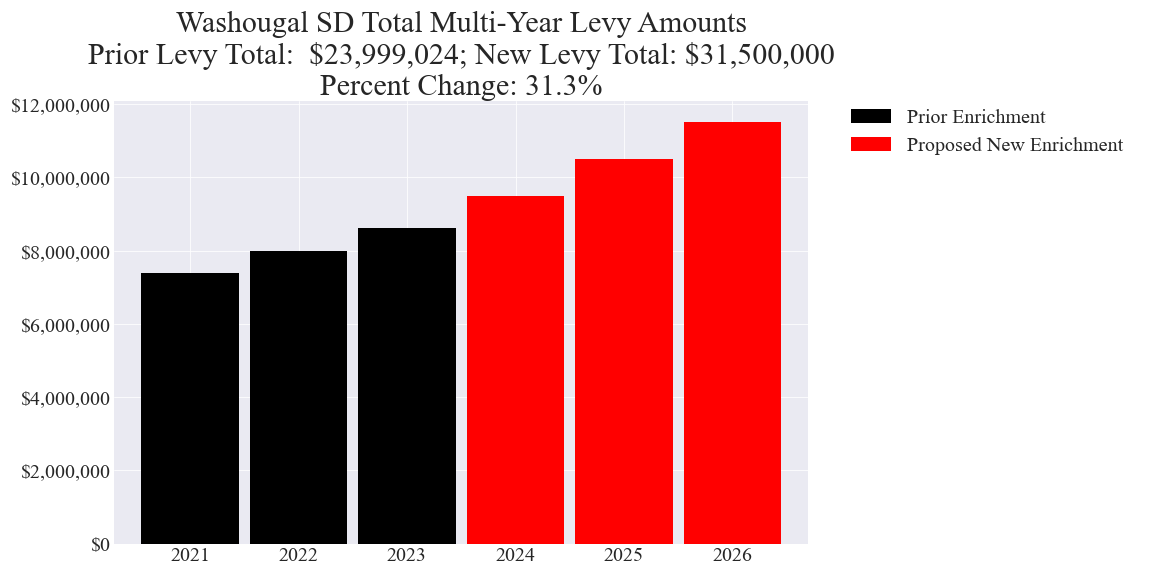
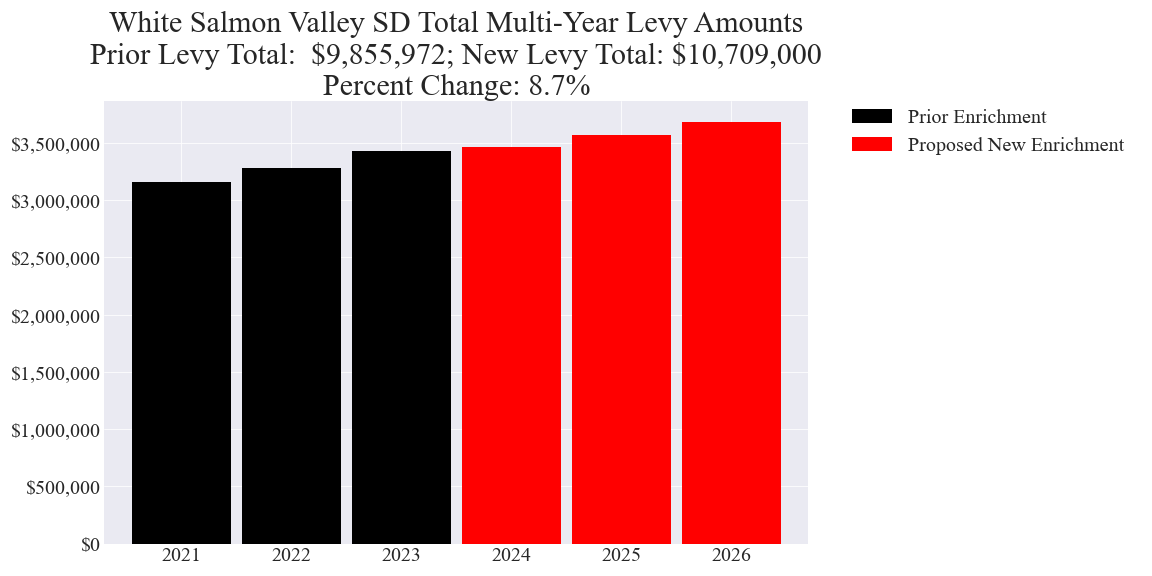
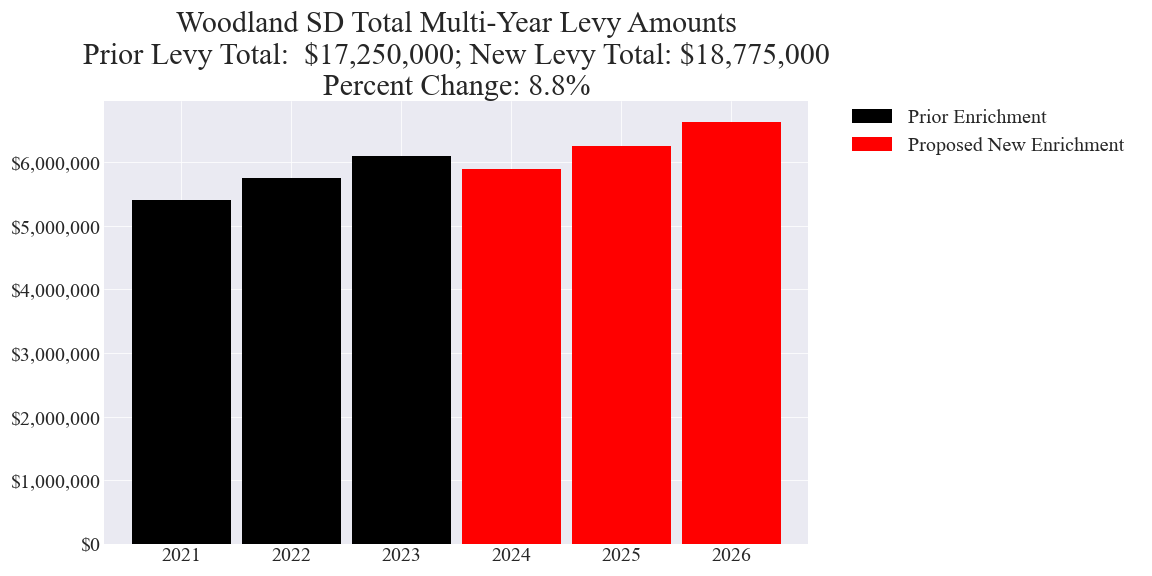
Capital levy amounts charts
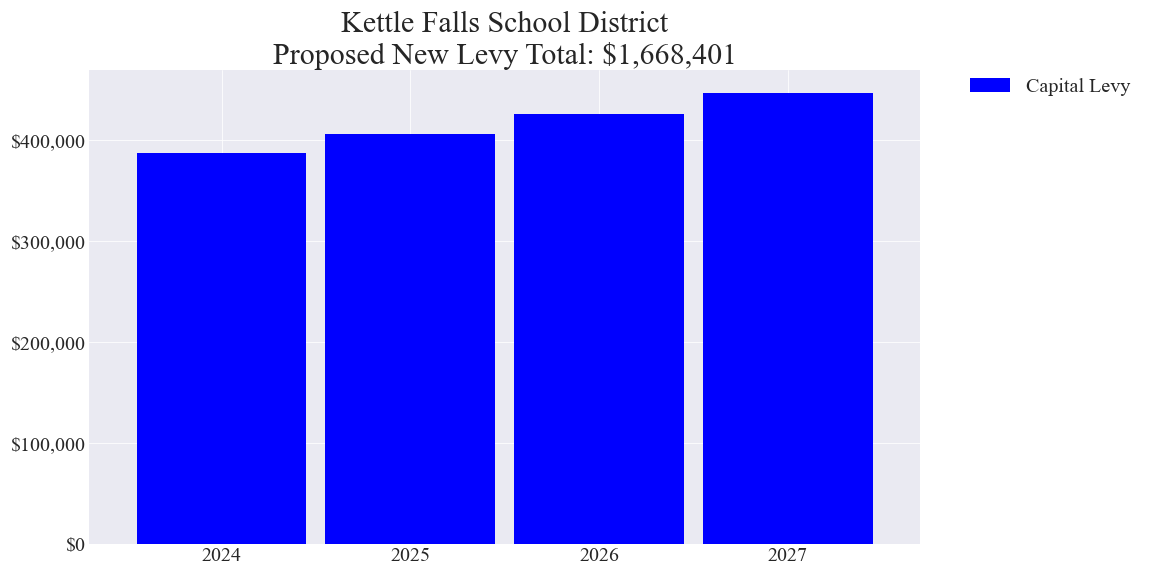

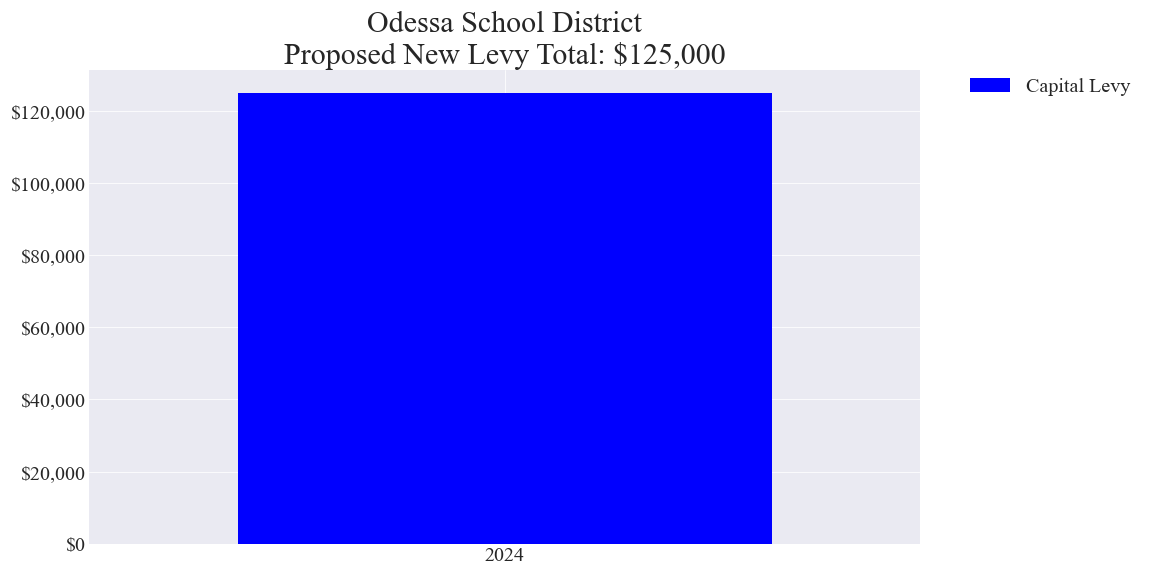
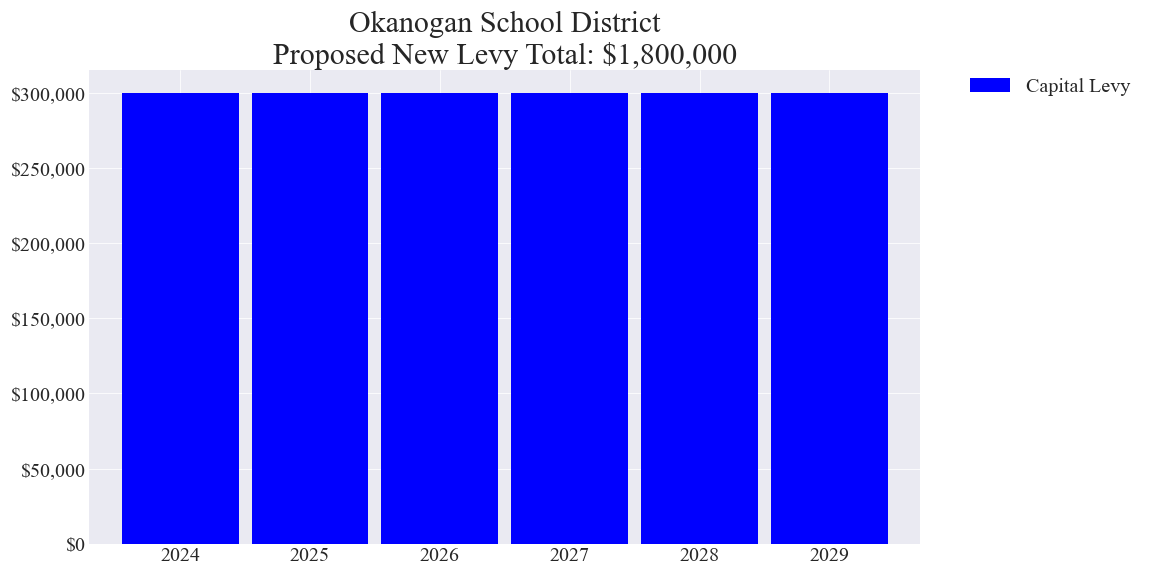
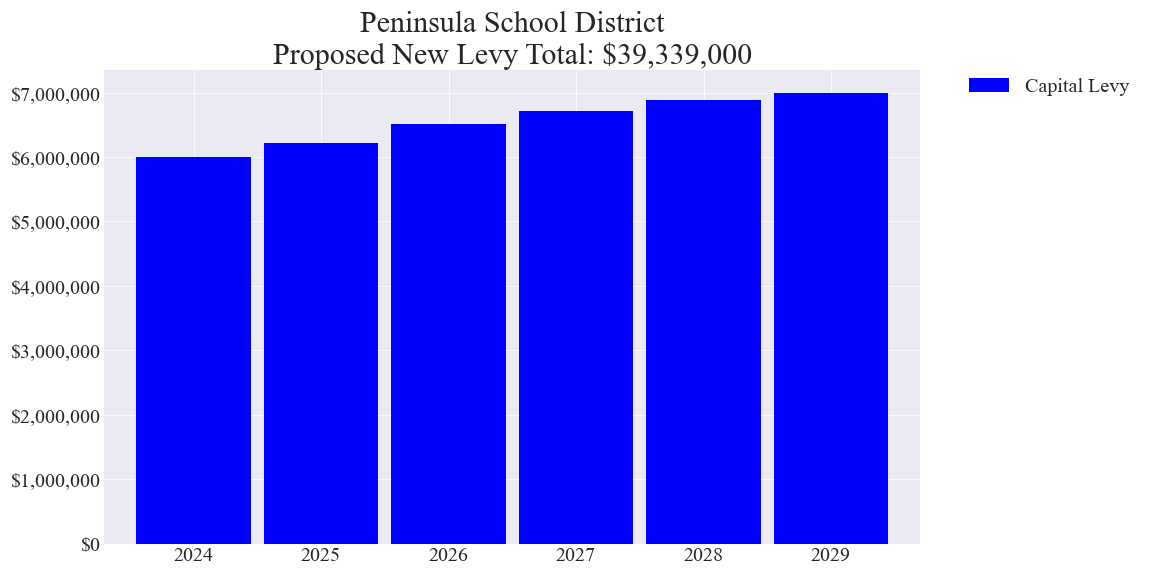
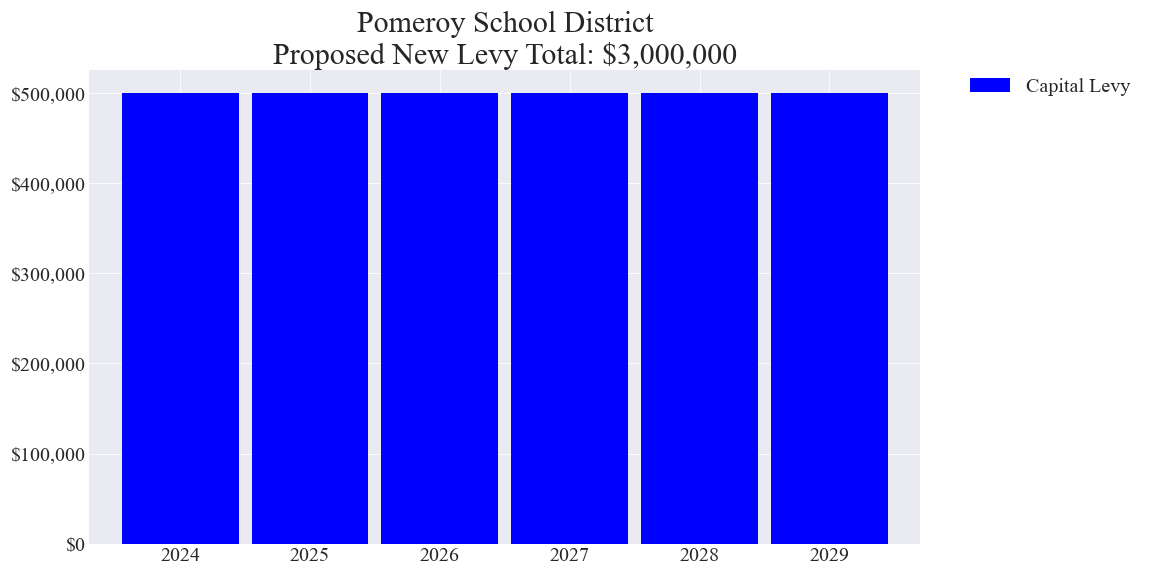
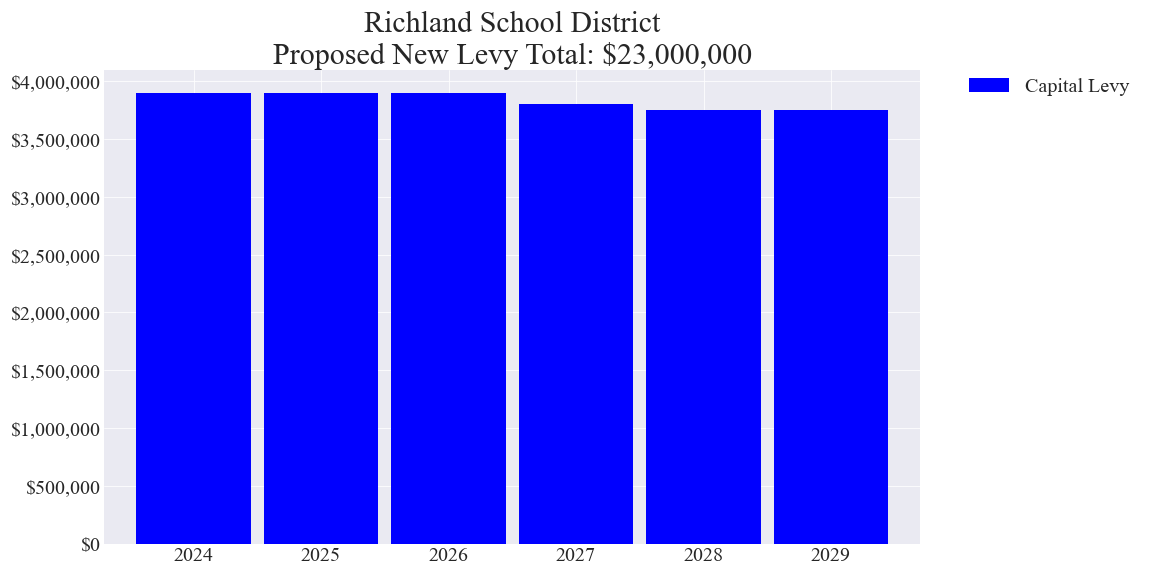
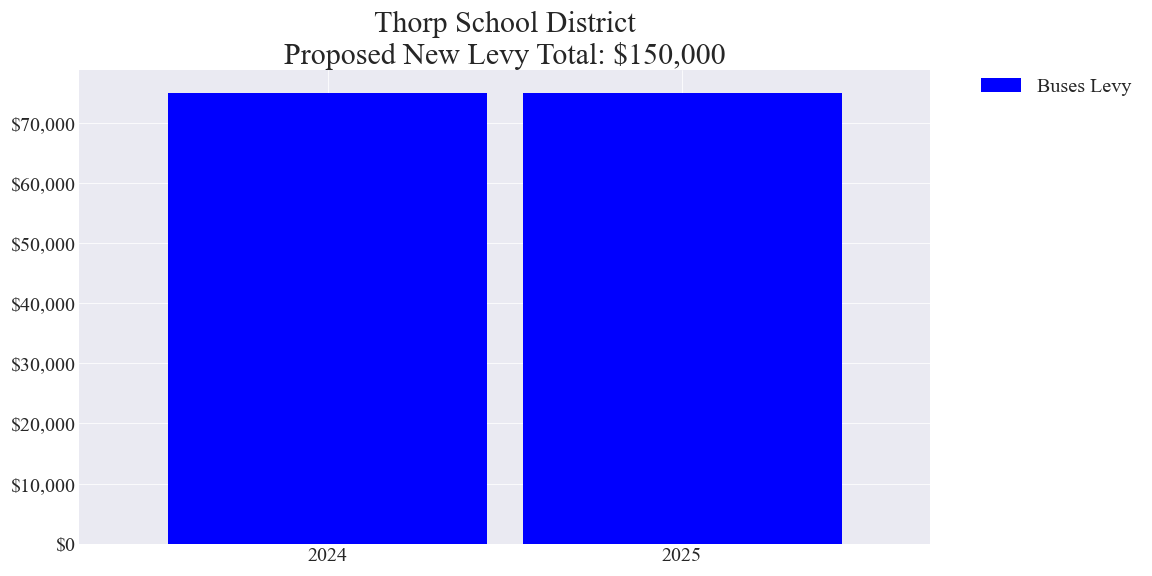
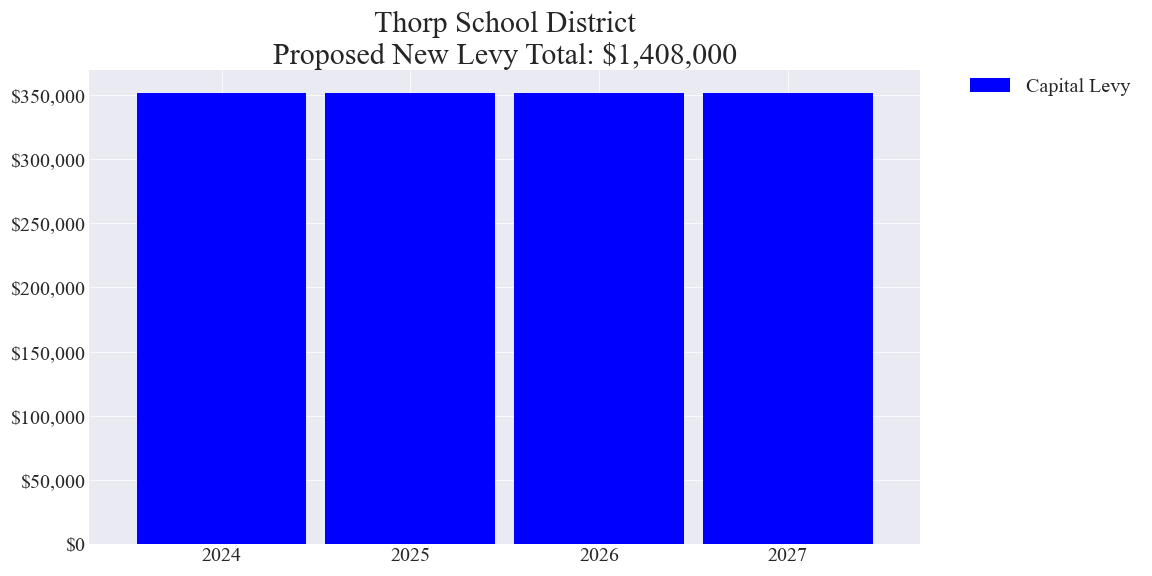
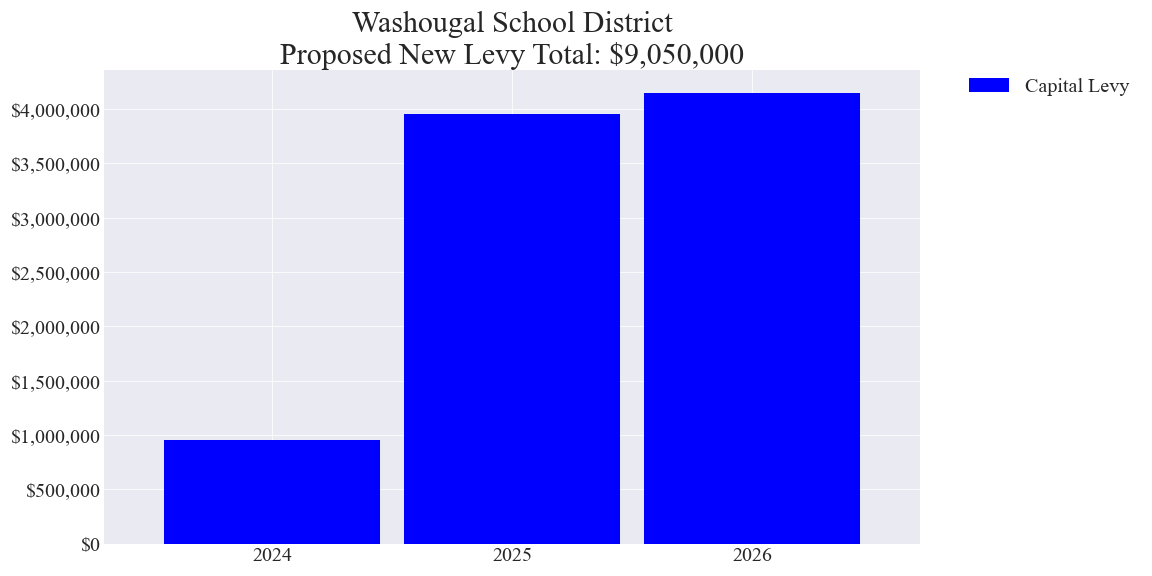
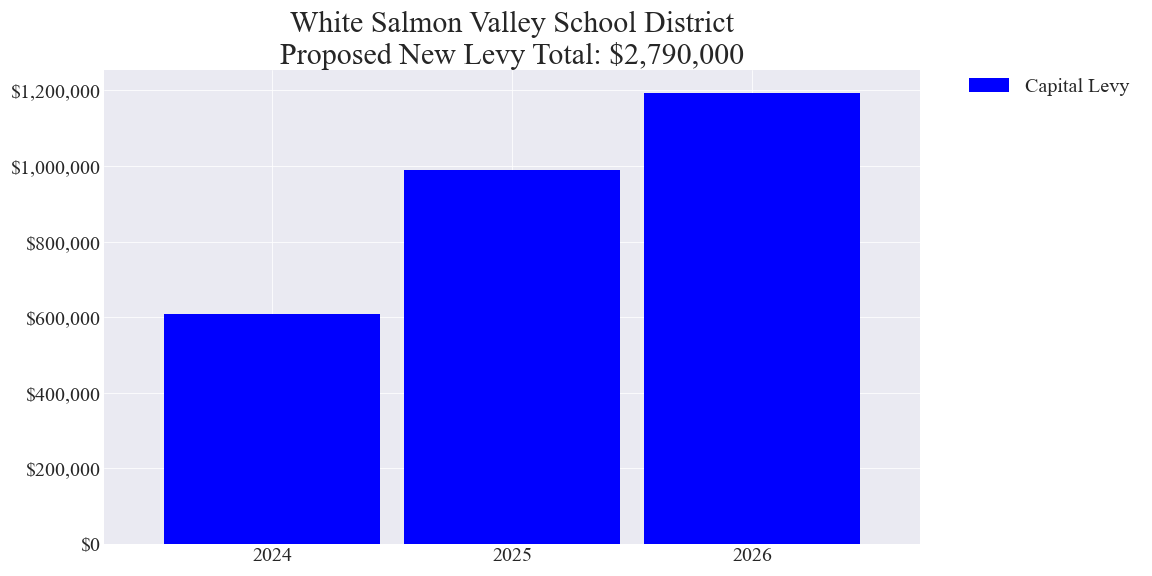
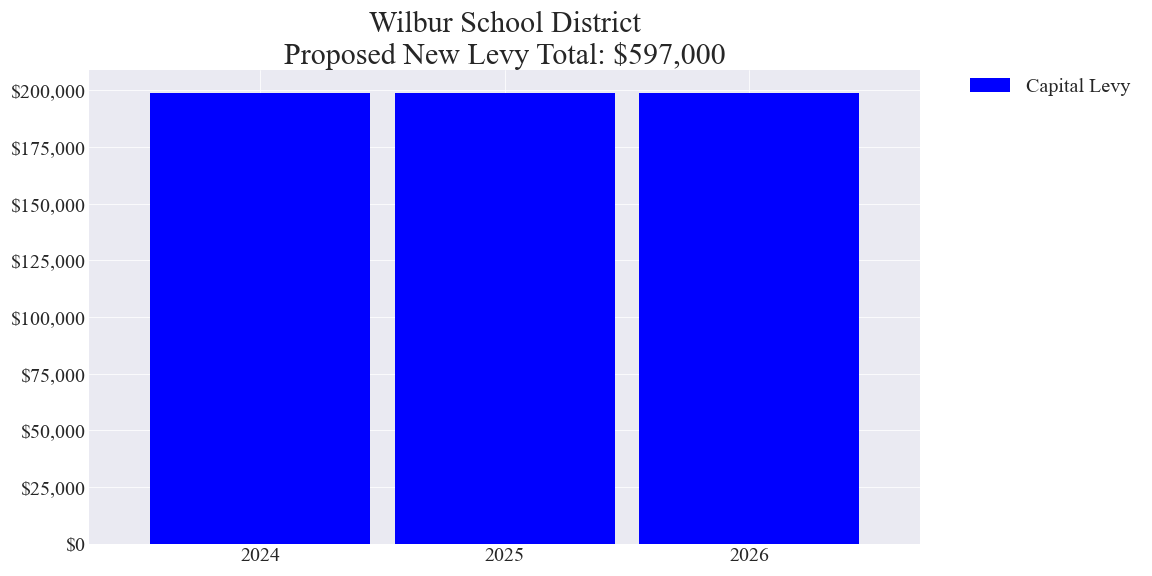
Bond amounts charts
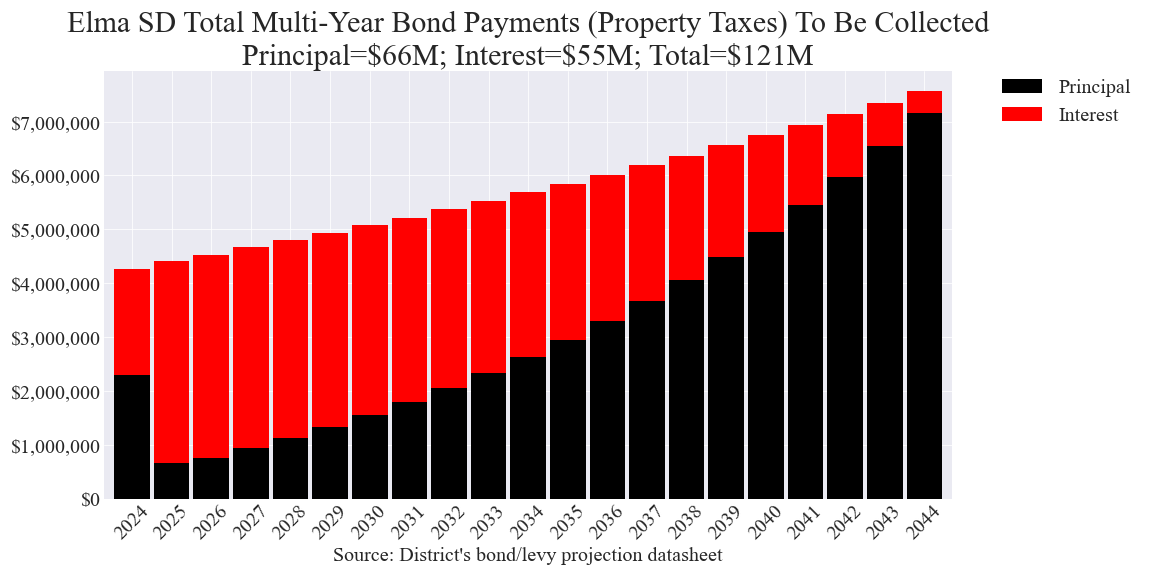
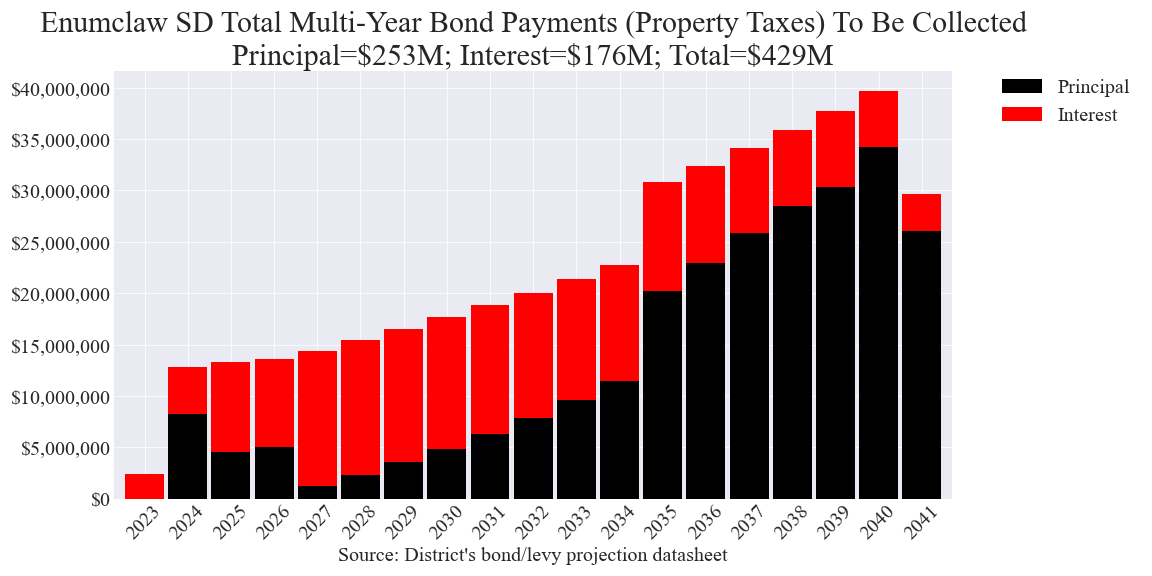

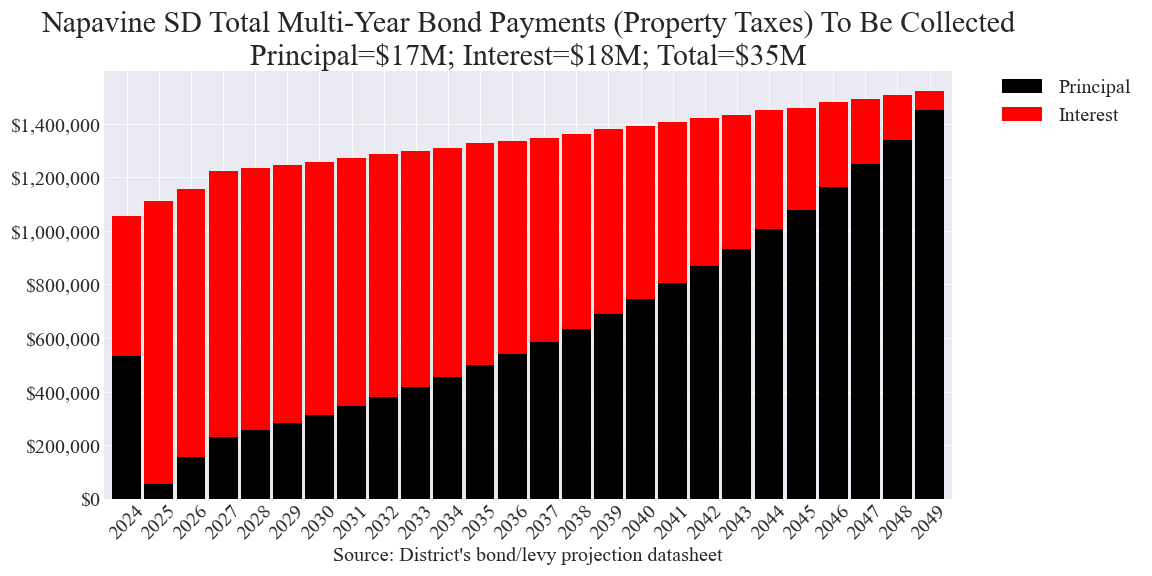
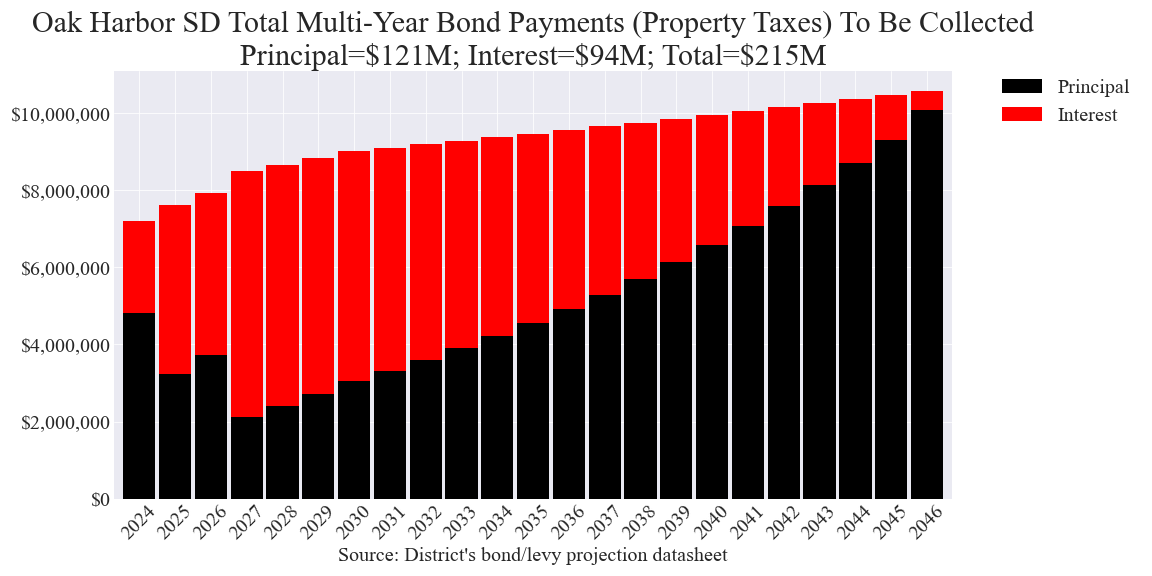
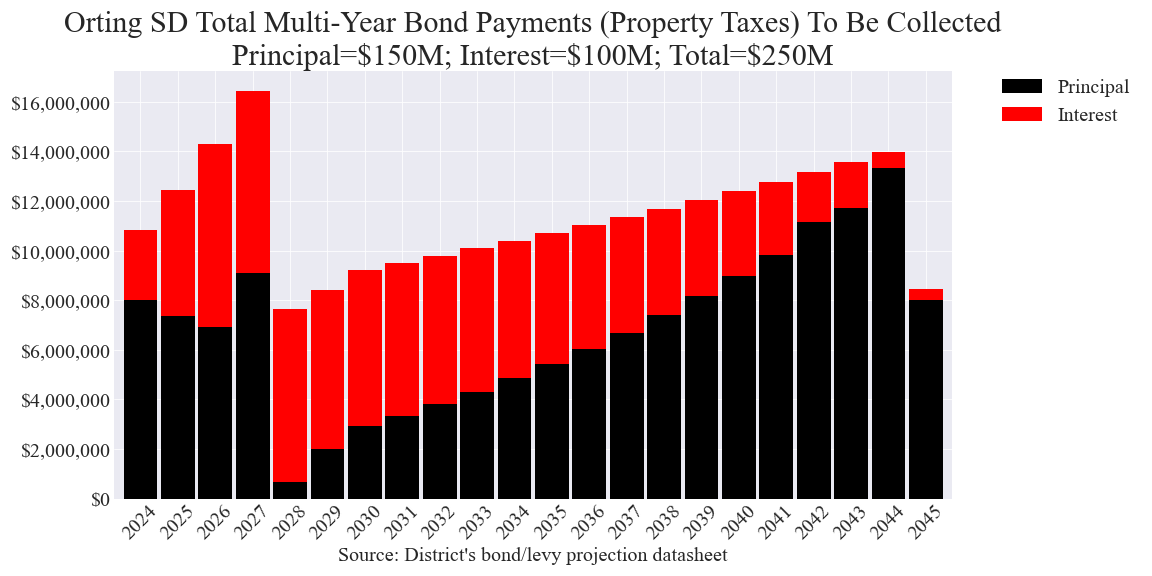
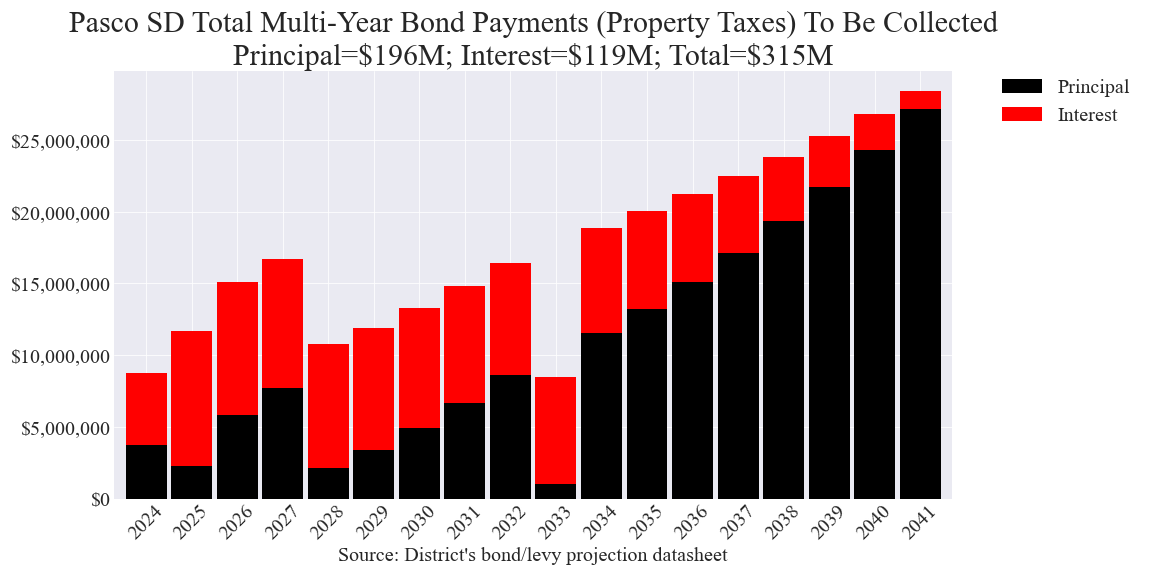
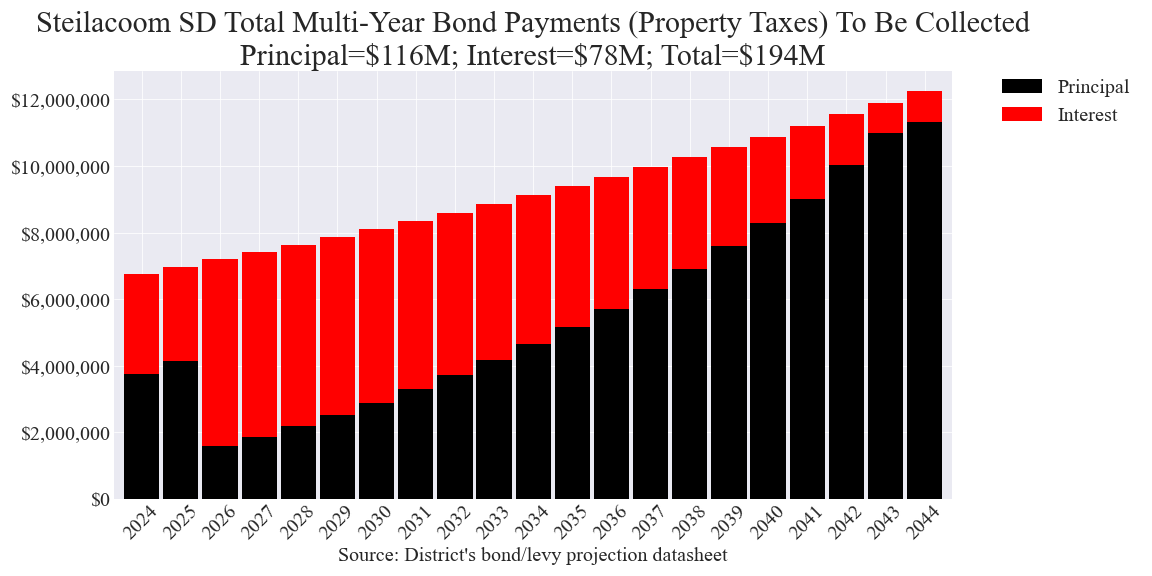
Bond schedules
County voters’ pamphlet rules summary
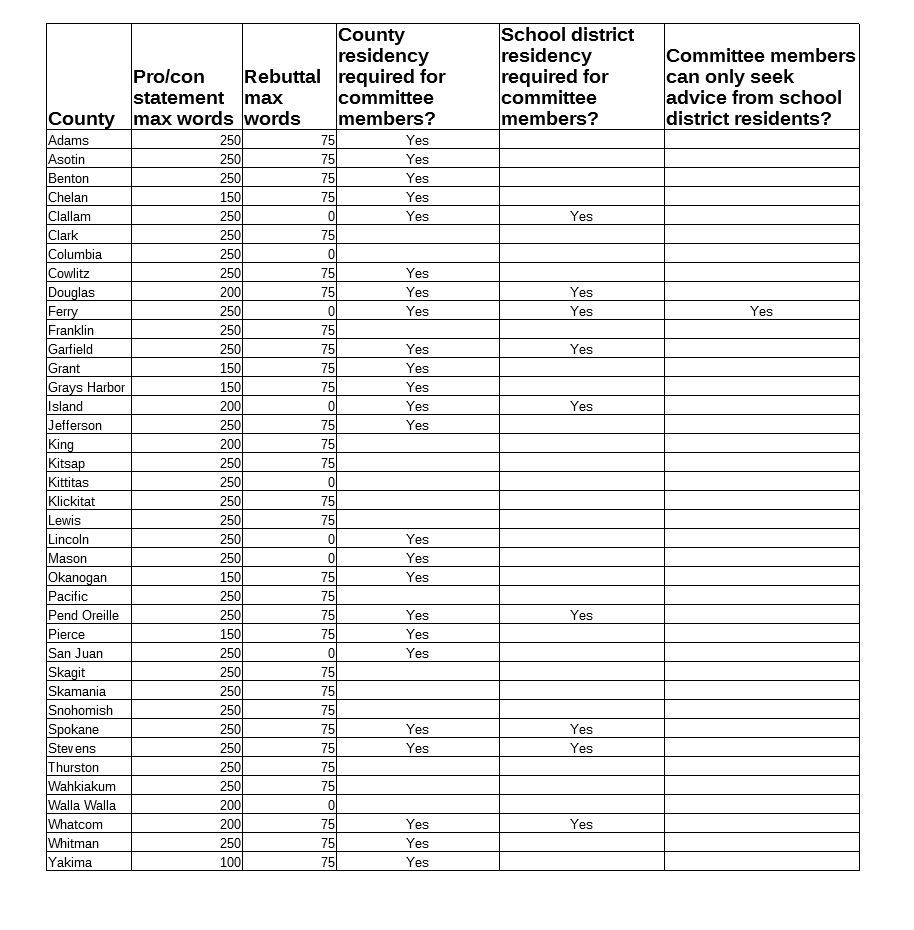
Pro/Con committees for the voters’ pamphlet summary
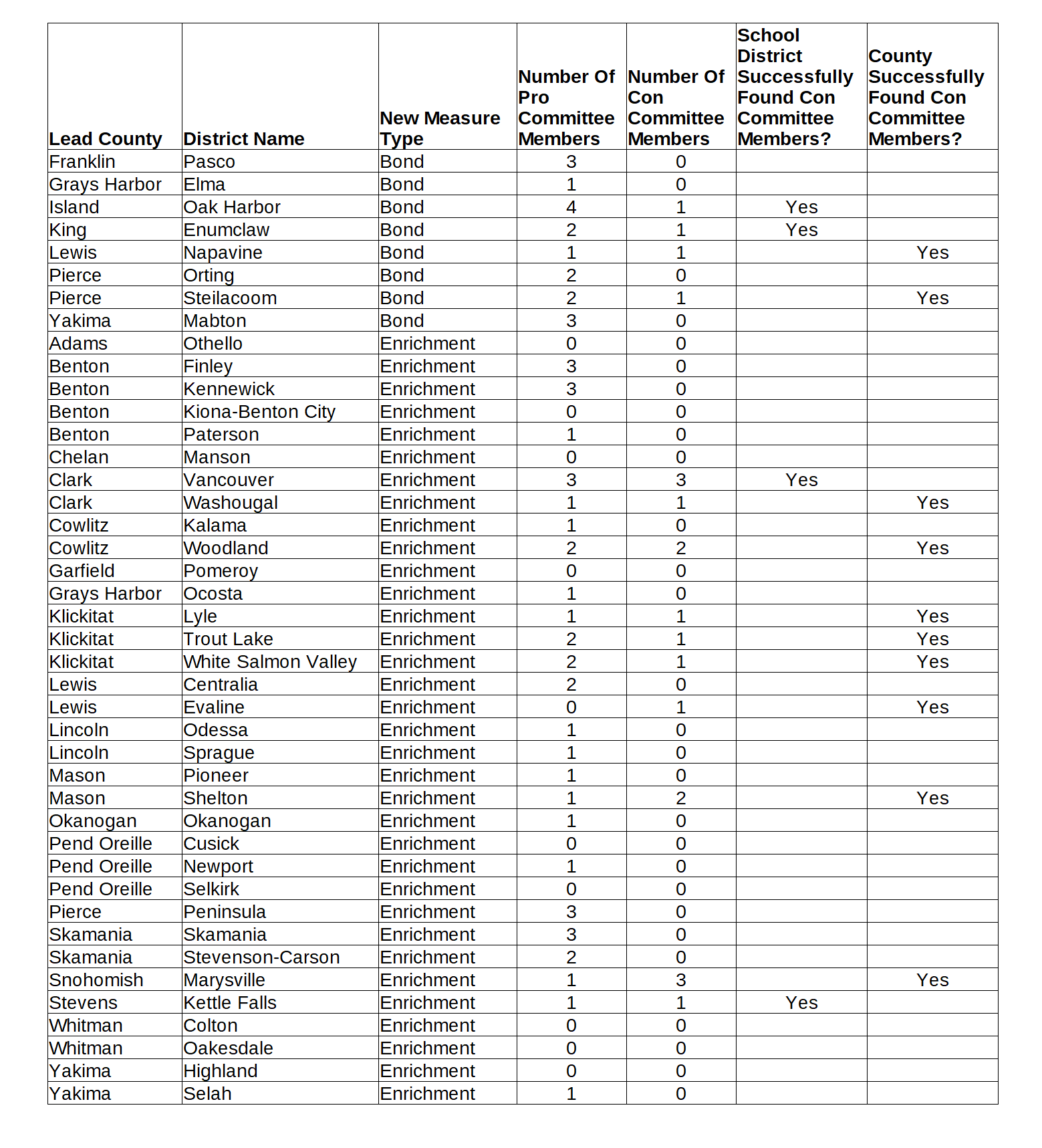
Note: Pro/con committee member selection, along with measure resolutions, by school districts were due to their respective county auditor on December 16th, 2022.
Analyses of the bond cost analyses presented by districts
An analysis of the Elma SD’s cost analysis
See the image with the red border.
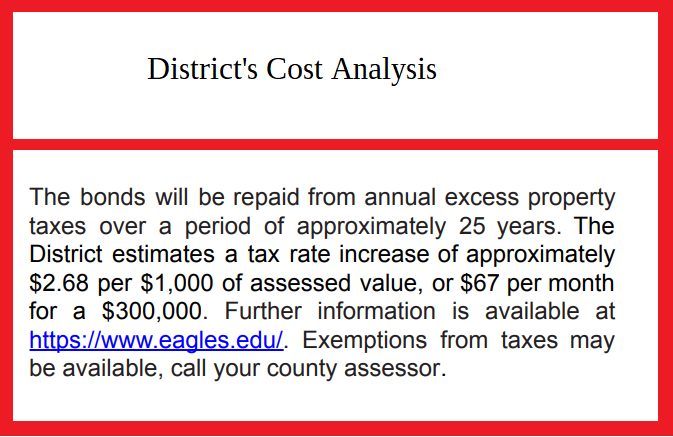
The district’s “cost analysis” on its taxpayer funded website and in its resolution is illogical and is underestimating the cost to taxpayers.
From the district’s bond management company’s report, this bond will be paid back with interest by local property taxpayers over 21 years - so from 2024 through 2044.
The district’s example home illogically maintain its AV (assessed value) for every year of those 21 years. Yet the district is assuming the Total AV of all taxable properties increase 22% in 2023 and then increase steadily every year hence.
The district is not being consistent. A $300,000 AV home in 2022 will, using the Total AV growth of the district, have a value of $683,000 approximately in 2044.
If the district reps would have been a little more accurate and transparent, and stated their assumptions correctly, they should have calculated:
For an example home with a 2022 AV of $300,000
the average annual bond tax (to cover principal and interest): $1,400 per year for 21 years
If one assumes a negative 1.5% proportional obligation factor change each year (for example if the pace of new construction continues despite high interest rates and high inflation),
the average annual bond tax (to cover principal and interest): $1,170 per year for 21 years
The district’s estimate of $67 per month (they used month instead of year) calculates to $804 per year.
Their estimate is 74% too low.
($1400 - $804) / ($804) = 74%
or, for the conservative case, 46% too low.
($1170 - $804) / ($804) = 46%
See the cost estimating calculator link above.
An analysis of the Enumclaw SD’s cost analysis
See the image with the red border.
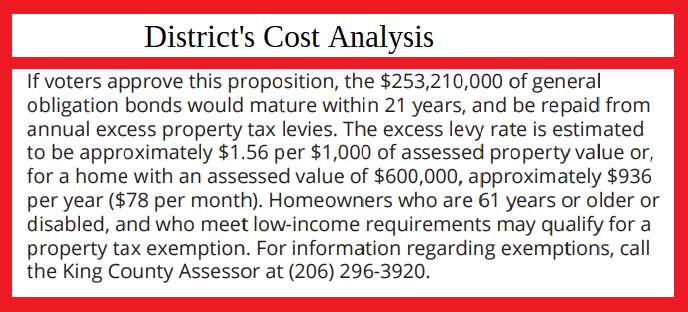
The district’s cost analysis in its campaign materials on its public taxpayer funded website and in its resolution in the voters’ pamphlet are illogical and are underestimating the cost to taxpayers. The district’s online calculator makes the same errors.
From the district’s bond management company’s report, this bond will be paid back with interest by local property taxpayers over 19 years. So from 2023 through 2041.
The 1.56 rate in the resolution is the difference between 2 guesstimated rates. The district’s $600,000 assessed valued (AV) example home somehow keeps that same AV each year from now until 2041 while the district assumes the Total AV of all properties grows at a healthy pace. This is the district’s fundamental math error. They should have allowed their example home’s AV to grow at the same pace as the overall Total AV. This is why they underestimate the cost impact of an example parcel.
Voters are not voting on a rate. They are voting on an amount. The district should properly explain this. Rates are a byproduct. They cannot be specified beforehand.
In each one of the 19 years, in February, for the bond payback schedule, the county assessor will take the district’s amount to collect that year and will divide it by the Total AV (assessed value) of all properties for that year to come up with a rate.
Then that rate will be applied to each individual parcel for the owner to then pay.
Using the author’s logical cost estimating calculator that uses a proportional obligation technique (see the link above): An example home with a 2022 AV of $600,000, and using a negative 3.0 % change in proportional obligation factor each year due to possible new construction, can expect to pay approximately $30,000 over the 19 years of the bond payback period ($17,000 in principal and $13,000 in interest) or on average per year payment of $1,600 for each of the next 19 years. Tax payments will actually start at approximately $1,250 in 2024 and increase to a high of $2,300 in 2040. This is because the district, unlike in a normal mortgage, is back-loading the bond payments.
An analysis of the Mabton SD’s cost analysis
See the image with the red border.
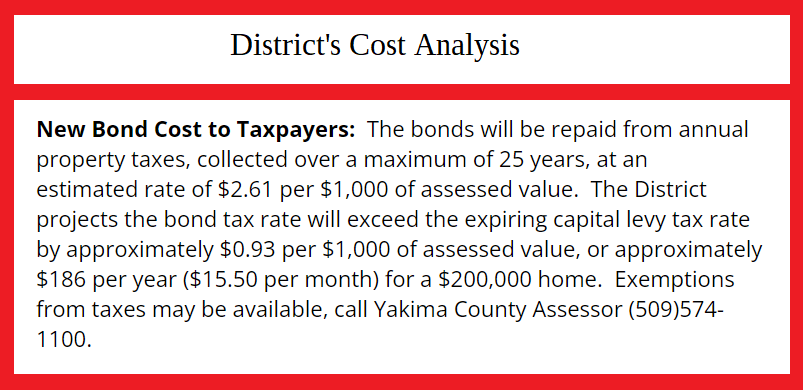
The district confuses and implies that a $200,000 home will see a tax bill of $186 per year or $15.50 per month.
They estimate a tax rate of $2.61 for the bond.
But then they go on to say it will only be $0.93 more than the expiring capital levy.
So to make things look better, instead of using the real estimated bond tax rate, they use this smaller amount of $0.93.
And that is how they get the $186 per year.
$200,000 / 1000 X 0.93 = $186
Problems with the district’s logic:
This is one of the worst cases of using incorrect logic and incorrect mathematics of any of the school district measures for this February election across the state.
The district should have at least multiplied the following:
$200,000 / 1000 X 2.61 = $522
Another problem is that the district is assuming the $200,000 AV home is that value in 2024.
But the district is assuming a Total AV growth from 2022 to 2024 of 18%
So a $200,000 AV home in 2022 will have an estimated AV of $236,000 in 2024.
The district should have been transparent and consistent.
So the estimated bond cost to the taxpayer in 2024 will be:
$236,000 / 1000 X $2.61 = $616
And because of the district’s bond repayment schedule (back loaded unlike a mortgage), that tax, for the example homeowner will steadily rise to $1088 by 2047
Please see the logical property tax estimating calculator link above.
An analysis of the Napavine SD’s cost analysis
See the image with the red border.
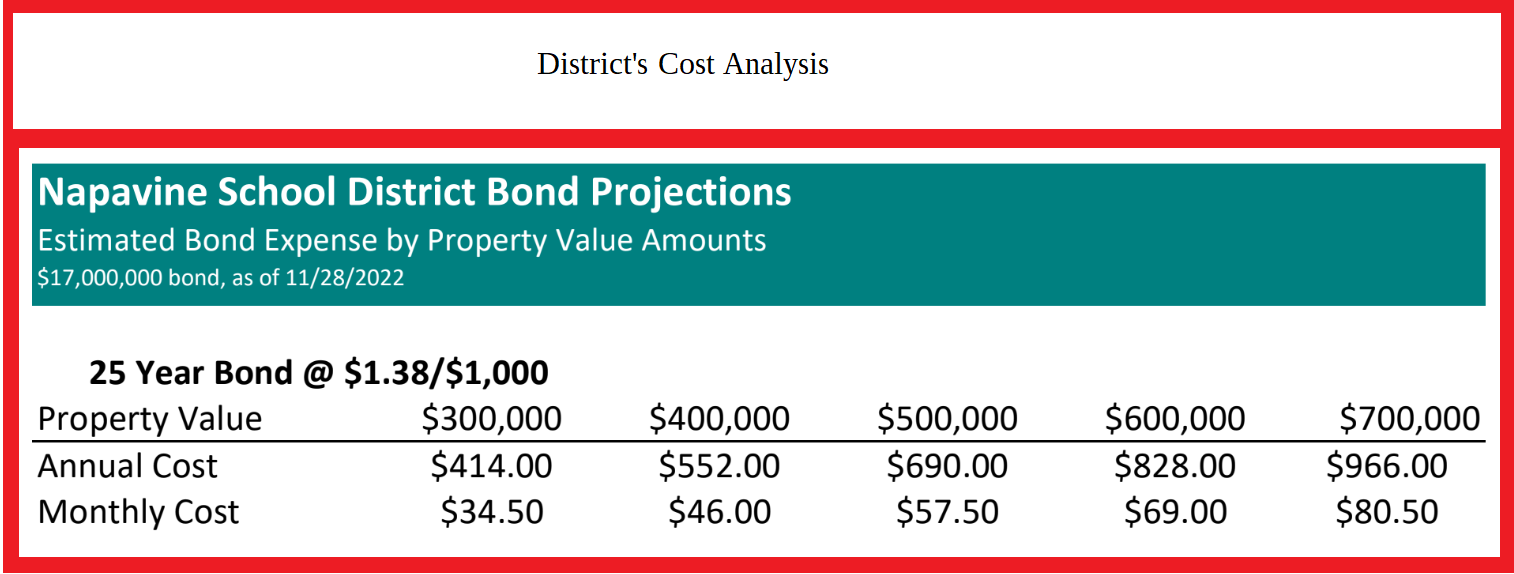
The district’s “cost analysis” on its taxpayer funded website and sent as a mailer using taxpayer money is illogical and is underestimating (by about 50%) the cost to taxpayers.
From the district’s bond management company’s report, this bond will be paid back with interest by local property taxpayers over 26 years. So from 2024 through 2049. The bond interest will be more than the advertised bond principal.
The example homes shown illogically maintain their AVs (assessed values) for every year of those 26 years. Yet the district is assuming the Total AV of all taxable properties increase 23% in 2023 and then increase steadily every year hence.
The district is not being consistent. A $300,000 AV home in 2022 will, using the Total AV growth of the district, have a value of $507,000 in 2049.
If the district reps would have been a little more accurate and transparent, and stated their assumptions correctly, they should have calculated:
Example home with a 2022 AV of $300,000
Average annual bond tax (to cover principal and interest): $611 per year for 26 years
See the cost estimating calculator link above.
An analysis of the Oak Harbor SD’s cost analysis
See the image with the red border.
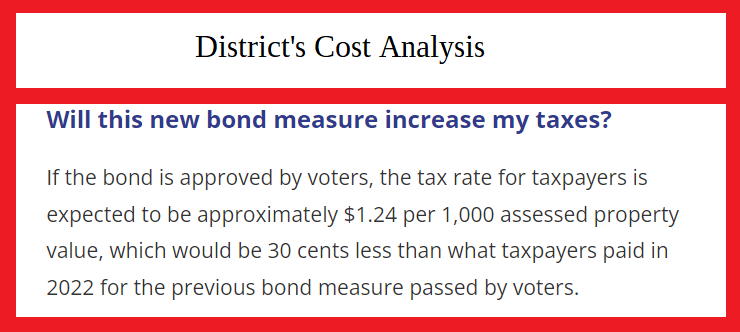
That paragraph is not much of a “cost analysis” provided by the district. It is not very useful, or accurate.
This is a 23 year bond. The district’s bond management company estimates that, with our current high inflation and high interest rates, this bond will cost:
$121M in bond principal
$94M in bond interest
For a total of
$215M for local property taxpayers to pay.
The homeowner of a home with an assessed value (AV) of $400,000 as of 2022,
can expect an estimated cost of
$16,000 ($9,000 in bond principal and $7,000 in bond interest) for this one bond
or $720 on average per year for the next 23 years.
See the link above for the cost impact estimating calculator.
Voters are not voting on a rate. They are voting on an amount. They district should explain this.
Rates are a byproduct. They cannot be specified.
The district’s bond management’s company is expecting the district to collect:
$7.2M in 2024
and then ramping up each year until they will collect
$10.6M in 2046
In each one of those years in February, the county assessor will take the district’s amount to collect that year and will divide it by the Total AV (assessed value) of all properties that year to come up with a rate.
Then that rate will be applied to each individual parcel for the owner to then pay.
An analysis of the Orting SD’s cost analysis
See the image with the red border.

Good news, bad news.
The good news. The district correctly explains that voters are voting on dollar amounts, NOT rates.
The district first selects how much it wants in taxes each year for the next 22 years.
Then the district makes an estimate on the Total AV (assessed value) for all taxable properties for each of those 22 years.
Then the district calculates their guesstimated bond tax rate for each year.
For a given year:
Bond tax rate for year = (Bond taxes to collect for year) / (Total AV for year) X 1000
The bad news.
What the district does not clearly state is that voters are deciding to allow the district to collect the tax amounts each year to cover the bond payback over 22 years to cover bond principal and bond interest.
The advertised bond principal for this bond is $150,000,000
What is not stated is that, with high inflation and high interest rates, the district’s bond management company estimates that the bond interest will add another $100,000,000 to also be paid by property taxpayers bringing the total to $250,000,000
Even if rapid new construction continues somehow with our high inflation and high interest rates over the next 22 years, say 2% average growth a year, the property owner of a parcel with a $500,000 AV as of 2022 will pay:
$38,000 over the next 22 years
$22,000 for his/her share of bond principal
$16,000 for bond interest
Or an average, $1,700 per year
See the cost estimating calculator link above.
An analysis of the Pasco SD’s cost analysis
See the image with the red border.
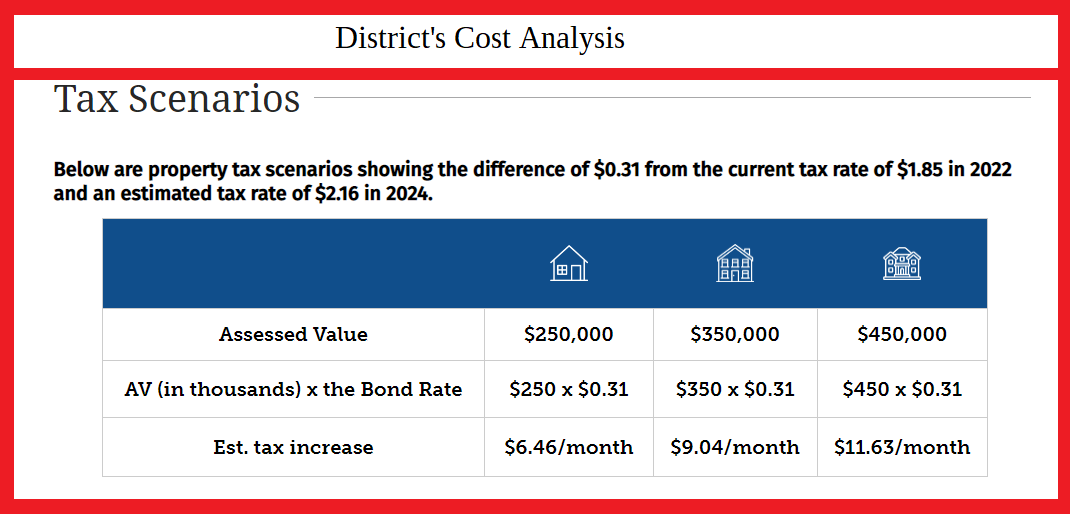
The district’s table of values for example parcels has false assumptions and underestimates the cost of this bond to property taxpayers (property owners and renters). The district doesn’t mention what year the assessed values (AVs) are from. The district doesn’t take into account the AV growth of those example parcels. The district assumes the AVs stay constant – an illogical assumption that causes them to grossly underestimate the cost impact.
This is an 18 year bond. The district’s bond management company estimates that, with our current high inflation and high interest rates, this bond will cost:
$196M in bond principal
$119M in bond interest
For a total of
$315M for local property taxpayers to pay.
Assuming new construction continues at approximately 2% in Total AV(assessed value) of all taxable properties within the district’s boundaries for each of those 18 future years:
An existing homeowner of a parcel with an AV of $400,000 as of 2022,
can expect an estimated cost of
$10,000 ($6,000 in bond principal and $4,000 in bond interest) for this one bond
or $550 on average per year for the next 18 years.
Now if new construction drastically slows down because of continued high inflation and high interest rates, then that same $400,000 AV parcel as of 2022,
can expect an estimated cost of
$13,000 ($8,000 in bond principal and $5,000 in bond interest) in total for this one bond
or $690 on average per year for the next 18 years.
See the link above for the cost impact estimating calculator.
Voters are not voting on a rate. They are voting on an amount. They district should explain this. Rates are a byproduct. They cannot be specified beforehand.
In each one of the 18 years for the bond payback schedule, each February, the county assessor will take the district’s amount to collect that year and will divide it by the Total AV (assessed value) of all properties for that year to come up with a rate.
Then that rate will be applied to each individual parcel for the owner to then pay.
An analysis of the Steilacoom SD’s cost analysis
See the image with the red border.

The district’s “cost analysis” on its taxpayer funded website and in its mailer (also paid for by taxpayers) is illogical and is underestimating the cost to taxpayers.
From the district’s bond management company’s report, this bond will be paid back with interest by local property taxpayers over 21 years - so from 2024 through 2044.
The district doesn’t even attempt to put an example parcel’s cost impact for this bond in its campaign materials. Instead, they just show a bar chart for 4 future years (2024-2027) with a $1.26 bond tax rate as their guess.
This bond has a 21 year payback scheduled. There is no mention of what happens in years 2028-2044.
For that tax rate of $1.26 the district fails to mention their assumptions for rapidly increasing Total AV (assessed value) of all taxable properties within the district’s boundaries.
Taxpayers/voters are not voting on a tax rate. They are voting on an amount.
For a more accurate, logical cost estimating calculator, please see the link above.
An example home with a 2022 AV of $500,000 can expect to pay approximately $1,020 per year on average for the next 21 years. About $600 of that goes to pay principal and the other $400 as bond interest.
The district fails to mention high inflation and high interest rates.
Analyses of the enrichment levy cost analyses presented by districts
An analysis of the Centralia SD’s cost analysis
See the image with the red border.
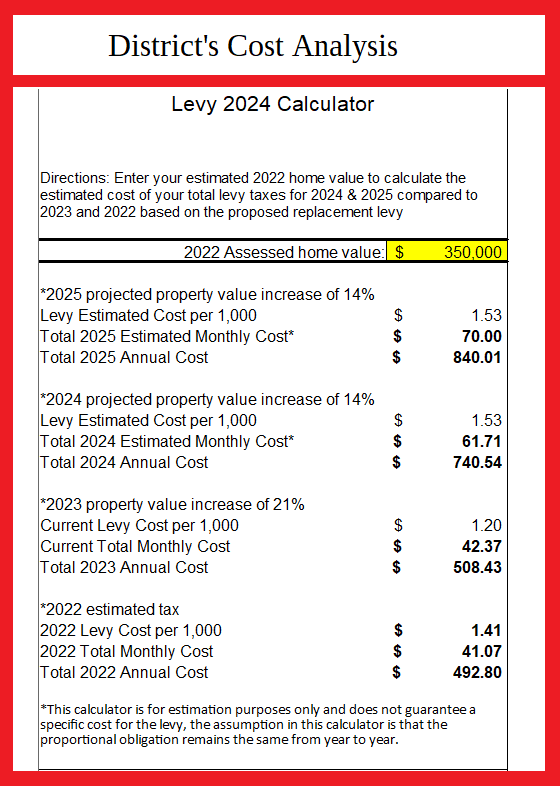
The Centralia SD actually provides 2 spreadsheet cost impact calculators for its citizens. Both are excellent. Both use logical assumptions of having the example parcel grow in assessed value (AV) at the same pace as the Total AV of all properties within the district’s taxing area.
This new enrichment levy is a 57% increase in dollars over the previous enrichment levy. But that is shown in the calculators provided by the district.
The author’s online property tax estimating calculator above shows the same results.
An analysis of the Finley SD’s cost analysis
See the image with the red border.
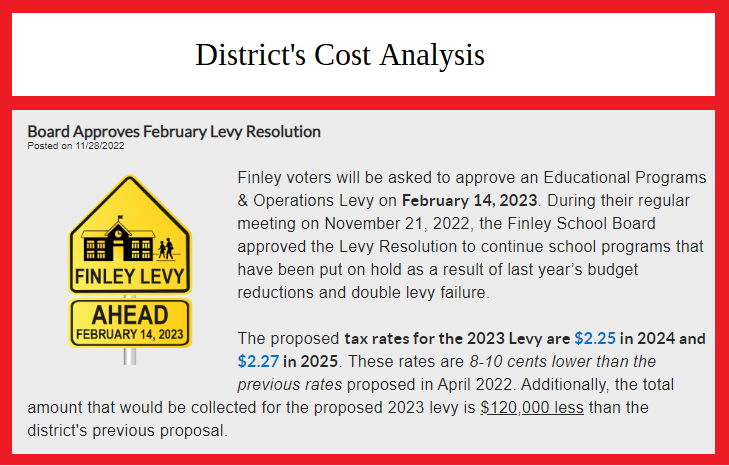
The district tries to compare this February 2023 levy amount to what it asked for in April 2022. That makes no sense. The district should be comparing the amount that is asking for this time with the actual levy amounts that were collected for the previous levy.
If they would have done that, then they would have had to admit that this new February 2023 levy is 26% more in dollars than the previous enrichment levy. So it is a tax increase – during high inflation. And taxpayers won’t learn about their 2023 property taxes until a day or two after this February election.
The district stating that their guesstimated rates are 8-10 cents lower than their previous guess in April is also nonsense. The district fails to mention skyrocketing assessed values (AVs) which cause rates to decline.
Citizens are being asked to approve an amount – not a rate. Future guesstimates for rates can be almost anything the district wants. They just need to assume different values for Total AV growth.
Actual rates are calculated each February each year by the county assessor once the Total AV (assessed value) for all taxable properties is known for the given year. The assessor then takes how much the district wants in dollars for the given year and divides it by the Total AV for the district area properties to calculate the rate. That rate is then applied to each parcel for that year.
See the logical cost impact estimating calculator above for details.
An analysis of the Highland SD’s cost analysis
See the image with the red border.
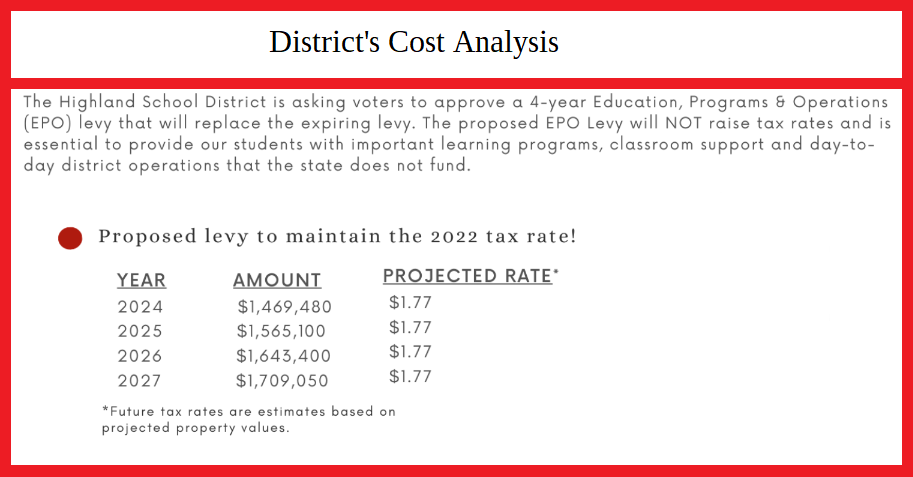
The district is claiming that their guesstimated future tax rates will be 1.77 which was the same as in 2022. The district fails to mention that they are assuming an 18% increase in Total AV (assessed values) from 2022 to 2024. And then they are assuming another 6.5% increase in 2025, then 5% in 2026, and another 4% in 2027.
Citizens are being asked to approve an amount – not a rate. Future guesstimates for rates can be almost anything the district wants. They just need to assume different values for Total AV growth.
Actual rates are calculated each February each year by the county assessor once the Total AV (assessed value) for all taxable properties is known for the given year. The assessor then takes how much the district wants in dollars for the given year and divides it by the Total AV for the district area properties to calculate the rate. That rate is then applied to each parcel for that year.
This enrichment levy is a 28% increase in dollars over the previous enrichment levy.
See the logical cost impact estimating calculator above for details.
An analysis of the Kalama SD’s cost analysis
See the image with the red border.
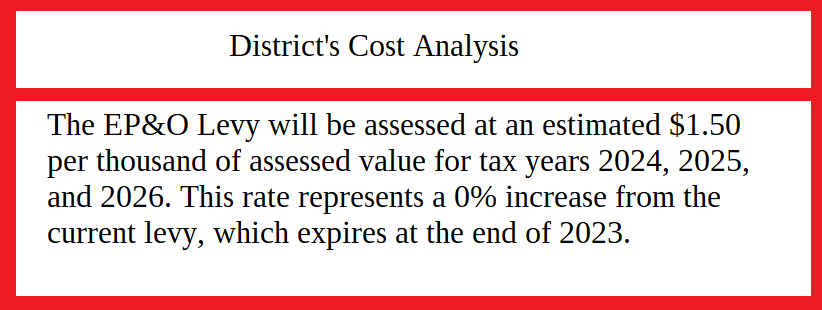
The district is confusing rates with dollars. The district fails to mention the rapidly rising assessed values (AV). A flat rate multiplied by skyrocketing assessed values equals skyrocketing taxes in dollars.
This new enrichment levy is more than a 50% increase in dollars over the previous levy!
See the logical cost impact estimating calculator above.
Rates are calculated once the Total AV (assessed value) for all properties is known. Then rates will be calculated, each February, based on how much the district wants in dollars divided by the Total AV for the district area properties.
An analysis of the Kennewick SD’s cost analysis
See the image with the red border.
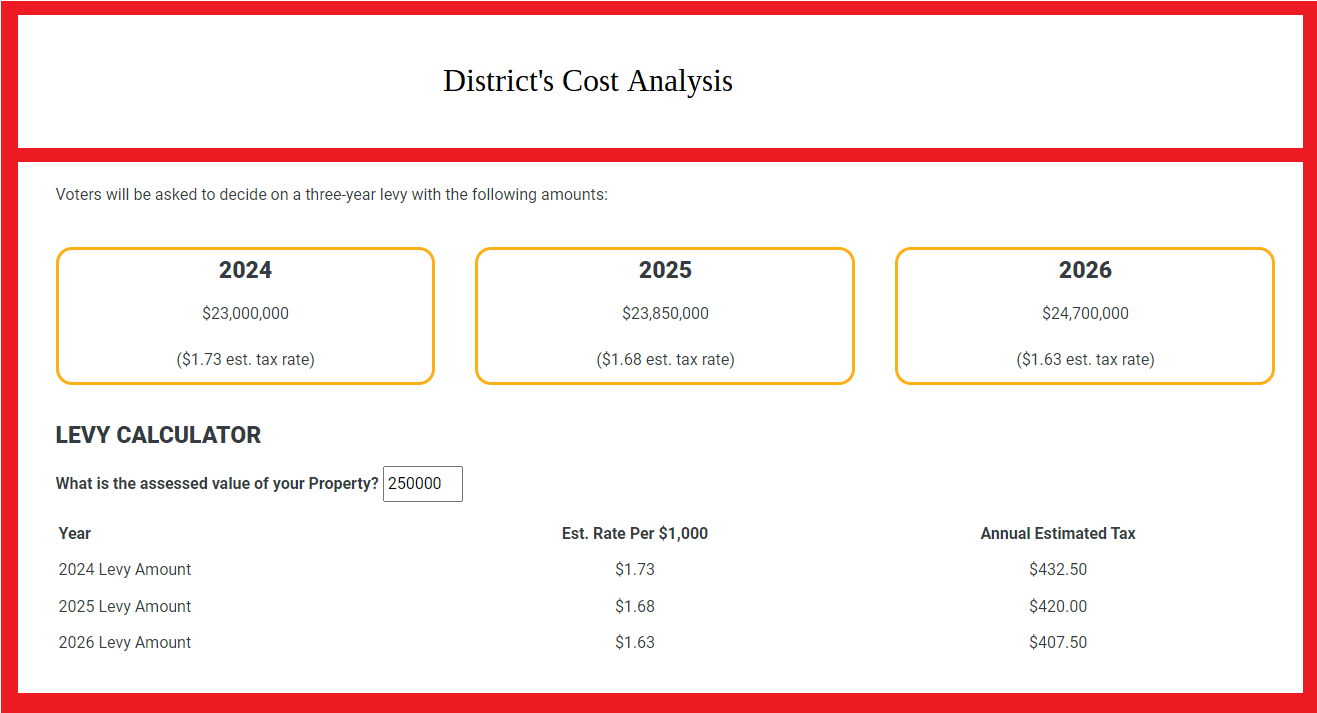
The Kennewick SD reps are making fundamental math errors and are using faulty logic in their cost analysis which underestimate the cost to taxpayers.
The district reps fail to mention skyrocketing assessed values (AVs). The district is assuming their example properties stay at the same AV for each year while they assume the Total AV (of all properties) increase substantially. The district needs to be consistent.
This levy is a 44% increase in dollars over the previous levy.
See the link above for a logical cost impact estimating calculator for details
An analysis of the Kiona Benton SD’s cost analysis
See the image with the red border.
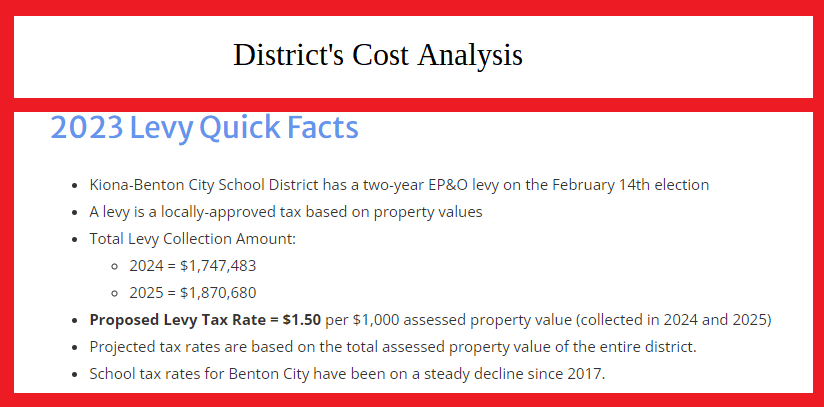
The district reps fail to mention that this levy is a significant tax increase in dollars. With higher property values, of course rates decline.
Citizens are being asked to approve an amount – not a rate. Future guesstimates for rates can be almost anything the district wants. They just need to assume different values for Total AV growth.
Actual rates are calculated each February each year by the county assessor once the Total AV (assessed value) for all taxable properties is known for the given year. The assessor then takes how much the district wants in dollars for the given year and divides it by the Total AV for the district’s taxing area properties to calculate the rate. That rate is then applied to each parcel for that year.
This enrichment levy is a 25% increase in dollars over the previous enrichment levy.
See the logical cost impact estimating calculator above for details.
An analysis of the Marysville SD’s cost analysis
See the image with the red border.
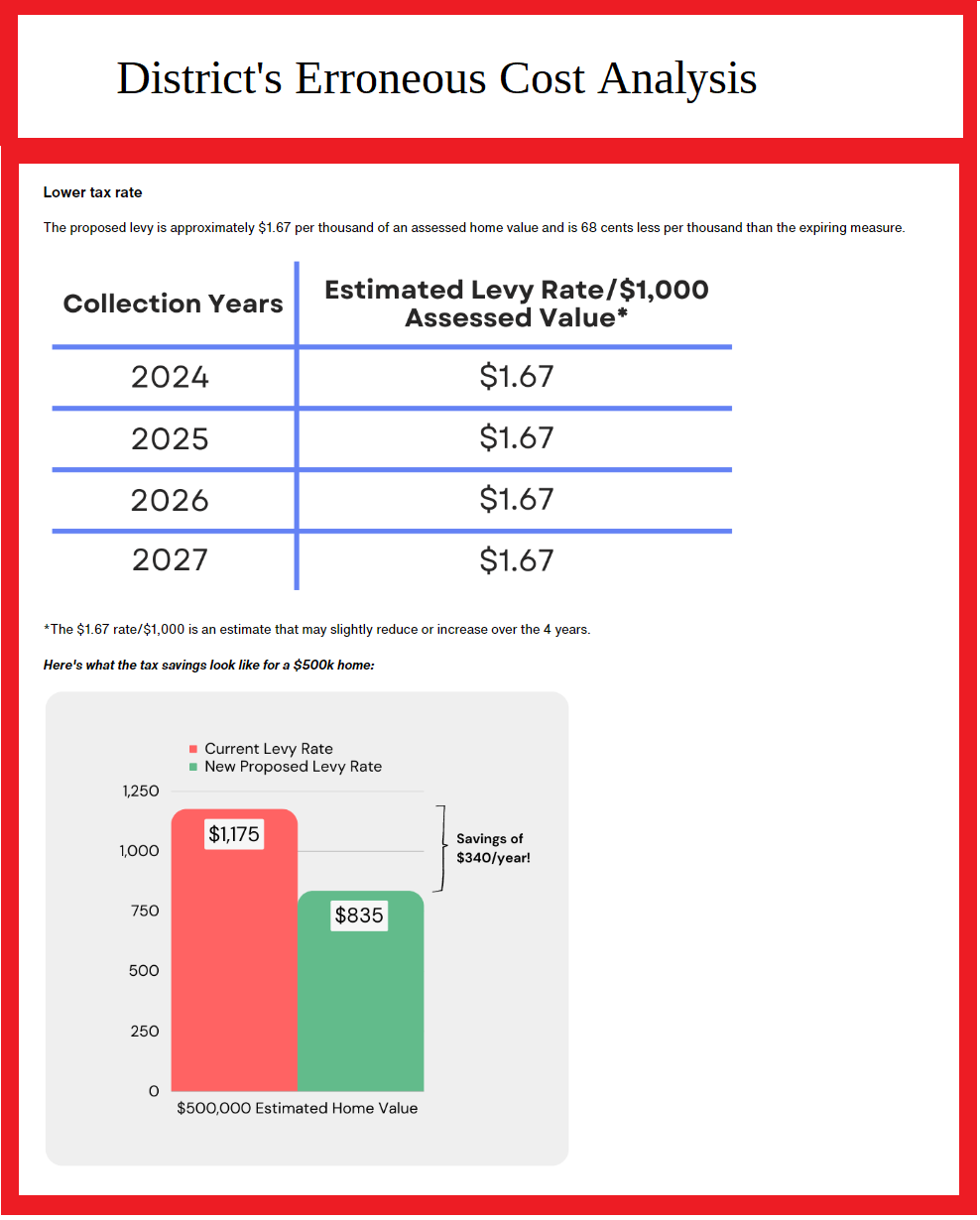
The district uses a fictitious example home with a $500,000 assessed value (AV). This example home is special. It supposedly maintains an AV of $500,000 every year in the past and future.
Of course tax rates go down as real AVs have skyrocketed. The district assumes Total AV of all taxable properties increase each year – except for this one home. It is illogical and mathematically incorrect.
The district failed to indicate the years on the X axis on their 2 bar bar chart. The red bar with a value of $1,175 is for year 2022. Year 2023 is not shown.
Their green bar is for 2024 with a value of $835. Now their example home is assumed (incorrectly) to have a value of $500,000 for 2022 and for 2024. But their own calculations have
an underlying assumption for Total AV growth from 2022 to 2024 of 32%!
That is how they came up with their estimated rates.
So they should have allowed their example home’s AV to grow by the same pace or 32% in which case the $500,000 home of 2022 will have an AV of approximately $663,000 in 2024 for a tax of $1,107.
So the claim of $340/year, for each of the 4 years in this new levy, in savings is ludicrous.
The district’s bar chart’s legend is also incorrect. The bars are levy tax amounts, not rates.
Citizens are being asked to approve an amount – not a rate. Future guesstimates for rates can be almost anything the district wants. They just need to assume different values for Total AV growth.
Actual rates are calculated each February each year by the county assessor once the Total AV (assessed value) for all taxable properties is known for the given year. The assessor then takes how much the district wants in dollars for the given year and divides it by the Total AV for the district area properties to calculate the rate. That rate is then applied to each parcel for that year.
This 4 year enrichment levy is a 21% tax increase in dollars over the previous 4 year enrichment levy.
See the logical cost impact estimating calculator above for details.
An analysis of the Okanogan SD’s cost analysis
See the image with the red border.

Citizens are being asked to approve an amount – not a rate. Future guesstimates for rates can be almost anything the district wants. They just need to assume different values for Total AV growth.
Actual rates are calculated each February each year by the county assessor once the Total AV (assessed value) for all taxable properties is known for the given year. The assessor then takes how much the district wants in dollars for the given year and divides it by the Total AV for the district area properties to calculate the rate. That rate is then applied to each parcel for that year.
This enrichment levy is a 28% increase in dollars over the previous enrichment levy.
A parcel with a 2022 AV of $200,000 can expect to pay $433 on average annually for this levy.
A parcel with a 2022 AV of $400,000 can expect to pay $866 on average annually for this levy.
See the logical cost impact estimating calculator above for details.
An analysis of the Othello SD’s cost analysis
See the image with the red border.

The districts is incorrectly assuming the Total AV increases each year but their example home’s AV stays constant. They are not being consistent and therefore their logic and mathematics are incorrect. They should have let the example home’s AV increase at the same pace as the Total AV for a more realistic estimate.
Citizens are being asked to approve an amount – not a rate. Future guesstimates for rates can be almost anything the district wants. They just need to assume different values for Total AV growth.
Actual rates are calculated each February each year by the county assessor once the Total AV (assessed value) for all taxable properties is known for the given year. The assessor then takes how much the district wants in dollars for the given year and divides it by the Total AV for the district area properties to calculate the rate. That rate is then applied to each parcel for that year.
This enrichment levy is a 27% increase in dollars over the previous enrichment levy.
The owner of a parcel with an AV of $300,000 as of 2022, can expect an average annual tax of approximately $570 over the 3 future years of the levy.
The owner of a parcel with an AV of $500,000 as of 2022, can expect an average annual tax of approximately $950 over the 3 future years of the levy.
See the logical cost impact estimating calculator above for details.
An analysis of the Shelton SD’s cost analysis
See the image with the red border.
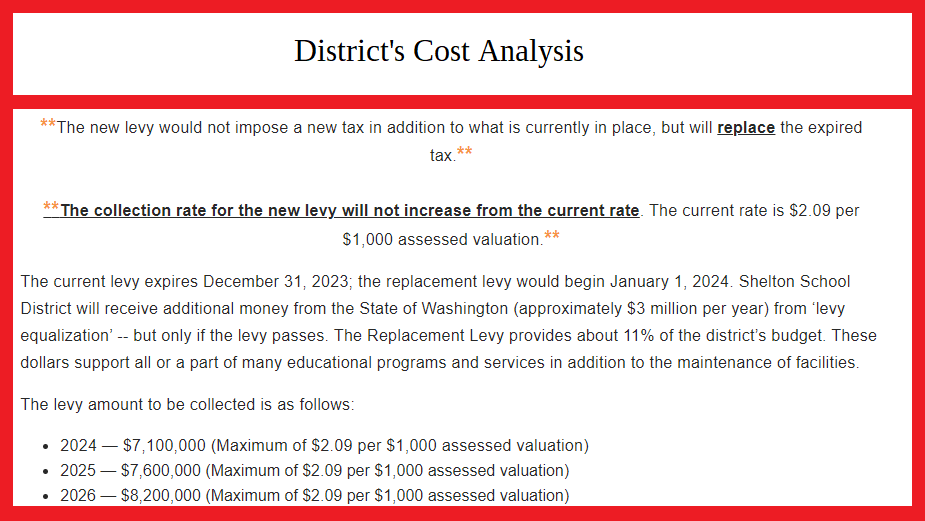
Citizens are being asked to approve an amount – not a rate. Future guesstimates for rates can be almost anything the district wants. They just need to assume different values for Total AV growth.
Actual rates are calculated each February each year by the county assessor once the Total AV (assessed value) for all taxable properties is known for the given year. The assessor then takes how much the district wants in dollars for the given year and divides it by the Total AV for the district area properties to calculate the rate. That rate is then applied to each parcel for that year.
This enrichment levy is a 35+% increase in dollars over the previous enrichment levy.
See the logical cost impact estimating calculator above for details.
An analysis of the Trout Lake SD’s cost analysis
See the image with the red border.
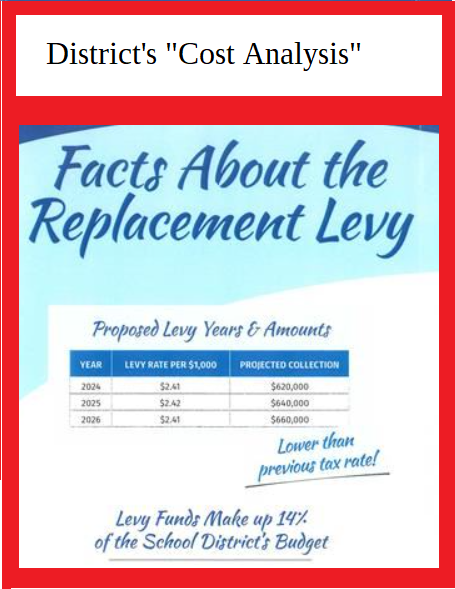
The district’s cost analysis states, “Lower than previous tax rate!”
The district fails to mention the rapidly rising assessed values (AV)which caused a lower rate. The district is taking advantage of these higher AVs. This excessive levy is an increase of over 36% in dollars over the previous – hardly a replacement.
Citizens are being asked to approve an amount – not a rate. Rates are calculated once the Total AV (assessed value) for all properties is known. Then rates will be calculated, each February, based on how much the district wants in dollars divided by the Total AV for the district area properties.
An analysis of the Vancouver SD’s cost analysis
See the image with the red border.
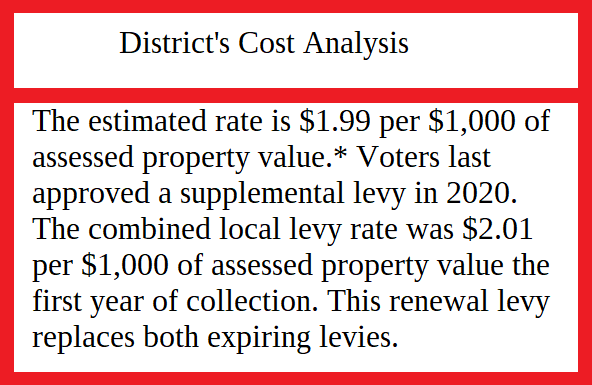
The district’s guesstimated rates are next to useless. Citizens are being asked to approve an amount – not a rate. Rates are calculated each February by the county assessor once the Total AV (assessed value) for all properties is known for the given year. The assessor then takes how much the district wants in dollars divided by the Total AV for the district area properties for the rate. That rate is then applied to each parcel.
This enrichment levy is a 50% increase in dollars over the previous enrichment levy.
See the logical cost impact estimating calculator above for details.
An analysis of the Washougal SD’s cost analysis
See the image with the red border.
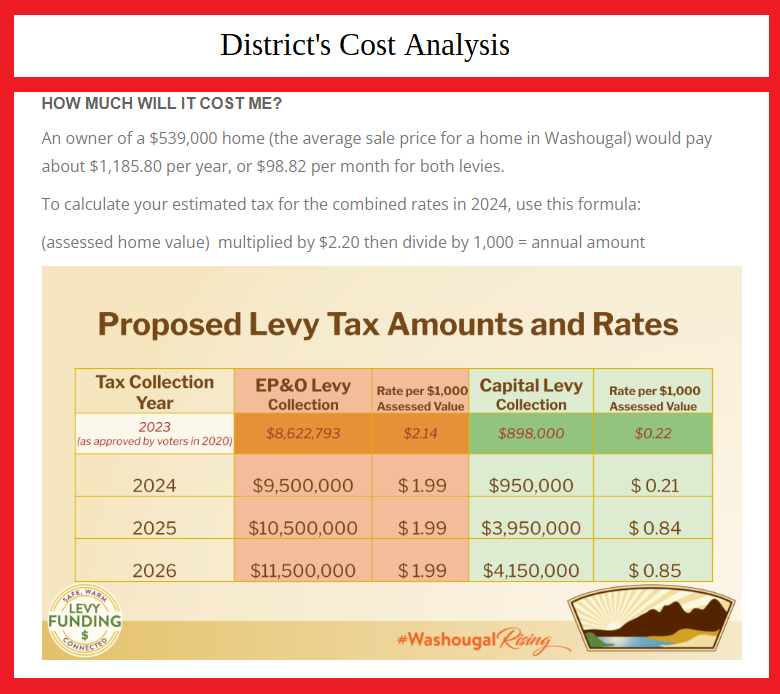
The district makes several math errors for their cost analysis. The district is using an example home with an assessed value (AV) of $539,000 that stays at that value for the current year and all future years. The district is assuming the Total AV of all taxable properties grows 22% from 2022 to 2024 and the 4% each year after that. This is their biggest mistake.
The district needs to be consistent. The district should have let the example home’s AV grow at the same pace as their assumption for Total AV growth.
Citizens are being asked to approve an amount – not a rate. Rates are calculated each February by the county assessor once the Total AV (assessed value) for all taxable properties is known for the given year. The assessor then takes how much the district wants in dollars for the given year divided by the Total AV for the district area properties to calculate the rate. That rate is then applied to each parcel for that year.
This enrichment levy is a 31% increase in dollars over the previous enrichment levy no matter what actually happens to total assessed values.
For a property (house, apartment, or business) with a 2022 AV of $500,000, the owner can expect an annual average tax of $1,400 for just the enrichment levy. The capital levy will cost approximately an extra $400 in annual average taxes. That is a total of $1,800 per year for the next 3 years. The district’s estimate is 50% too low.
See the logical cost impact estimating calculator above for details.
Calculator methodology
For these property tax impact estimate calculators, a Proportional Obligation Factor (POF) method was used.
Using the 2022 Total District Assessed Value (AV), the POF of the sample parcel was calculated:
POF = (2022 Sample Parcel AV) / (2022 Total District AV)
The POF was then multiplied by the total amount that the district expects to collect each year for the duration of the measure in question (bond or levy) to obtain the estimated taxes for the sample parcel for the measure.
Using this methodology, it doesn’t matter if all properties increase in AV by 10% or all decrease in AV by 10% (which could happen in a recession). The tax collection schedule shown in the charts and tables would still apply for the sample parcel. The sample parcel’s proportion of obligation for the bond debt or levy remains the same over the bond payback or levy period. Tax rates, however, would change. If all properties increase in AV by 10%, the tax rate for the measures would decrease by approximately 10%. If all properties decrease in AV by 10%, the tax rate for the measures would increase by approximately 10%.
Note for the POF annual change parameter for the enhanced calculator versions:
For parcels that are increasing in POF (Proportional Obligation Factor), a positive POF annual change will give more accurate results. For parcels that are decreasing in POF due to rapid new construction or for other reasons, a negative POF annual change will give more accurate results. However a value of 0 will generally be slightly conservative and will generate estimates that are usually within 5% of actual costs.
It is the author’s opinion that county assessors (in all 39 WA counties) should be providing these calculators for their constituents.
Example calculator calculation:
Issaquah SD
Total District AV for 2022: $40,480,082,421
Sampler parcel AV for 2022: $1,100,000
POF for 2022 assumed to be the same for years 2023 - 2026: $1,100,000 / 40,480,082,421 = 2.717E-5
Enrichment Levy amount to collect in 2023: $61,000,000
Sampler parcel’s 2023 tax for the Enrichment Levy: POF * (Enrichment Levy amount to collect in 2023) = 2.717E-5 * $61,000,000 = $1,658
Similarly for the years 2024 - 2026
2024 tax = 2.717E-5 * $64,000,000 = $1,739
2025 tax = 2.717E-5 * $67,000,000 = $1,821
2026 tax = 2.717E-5 * $70,000,000 = $1,902